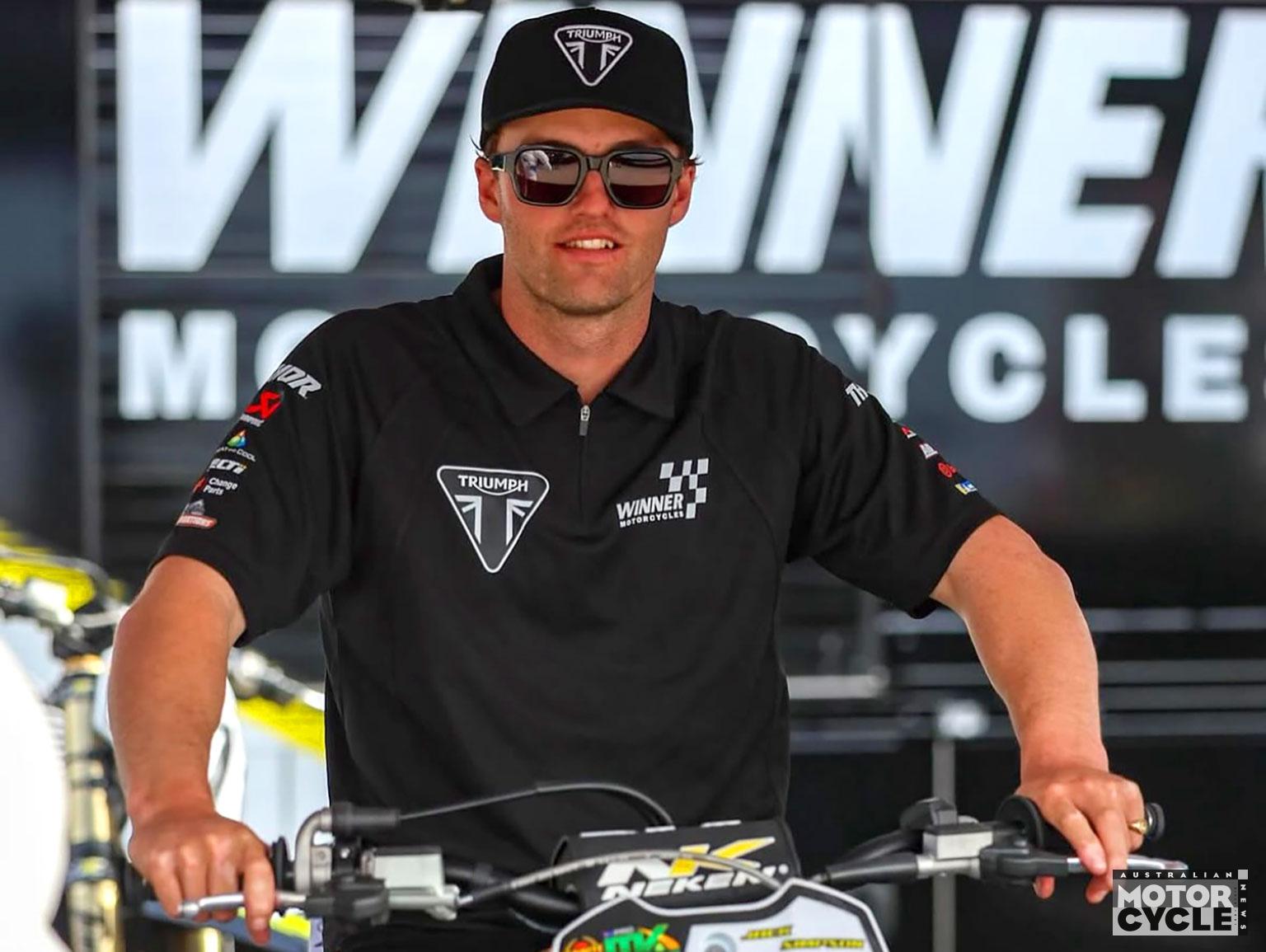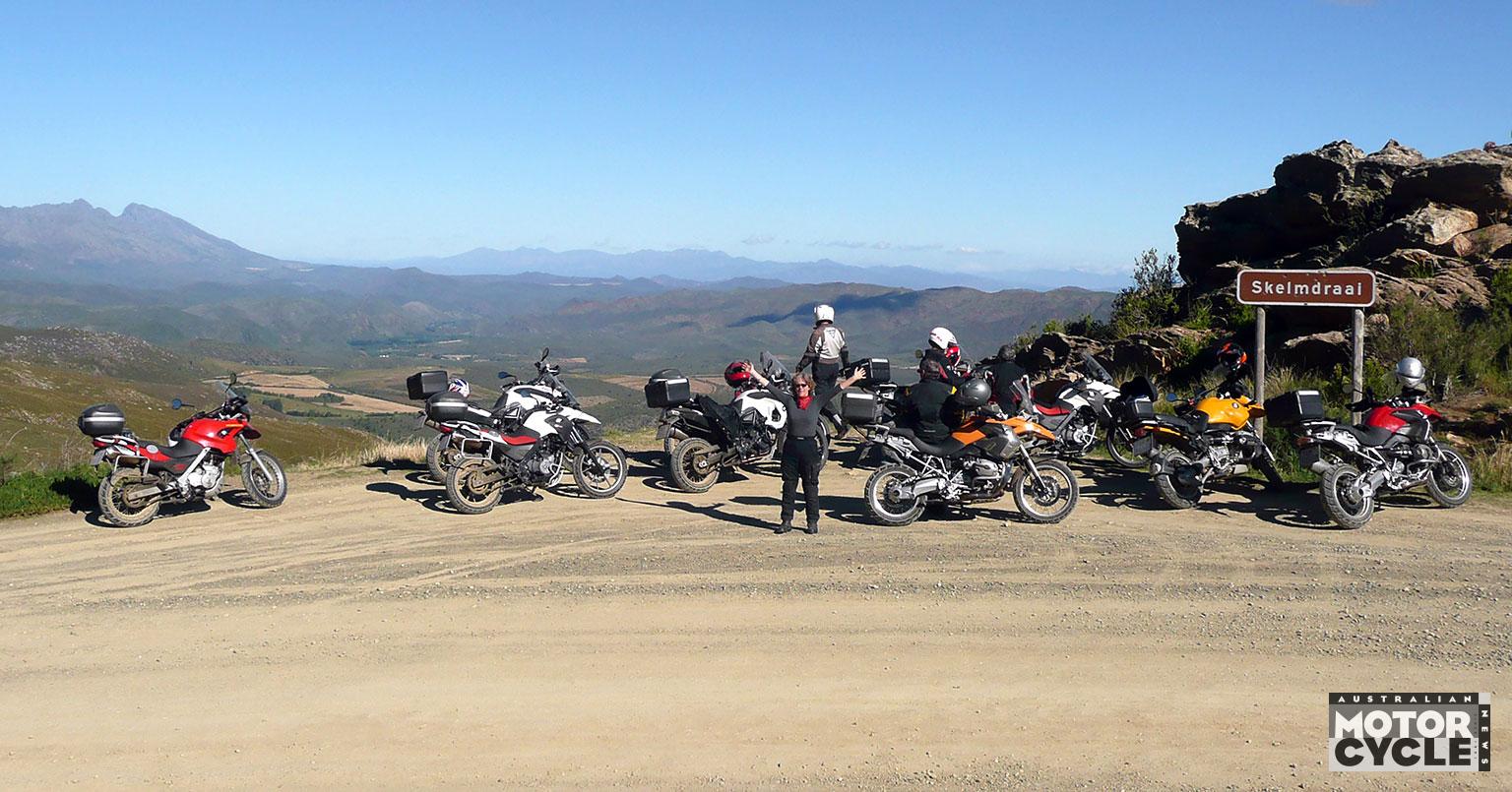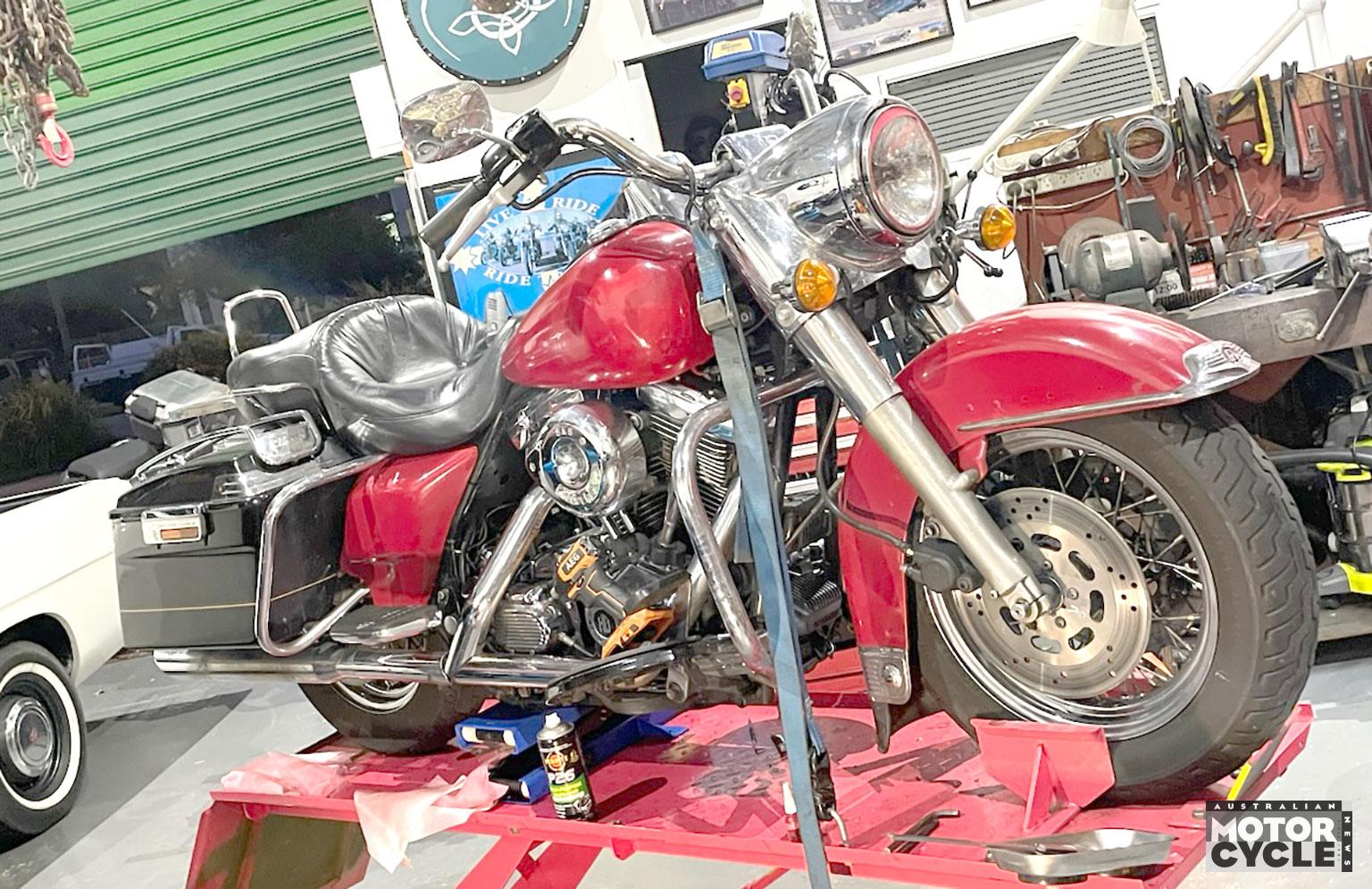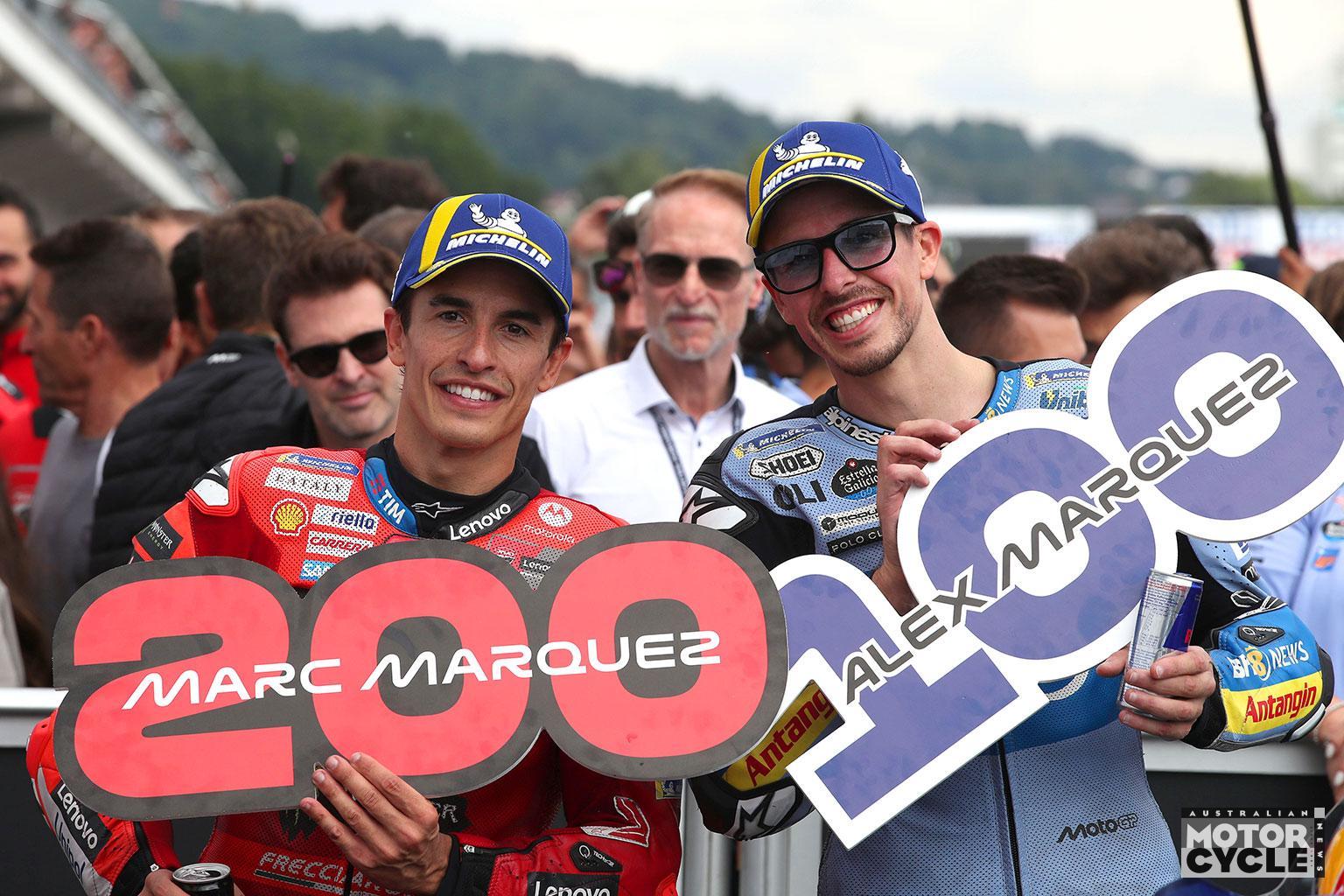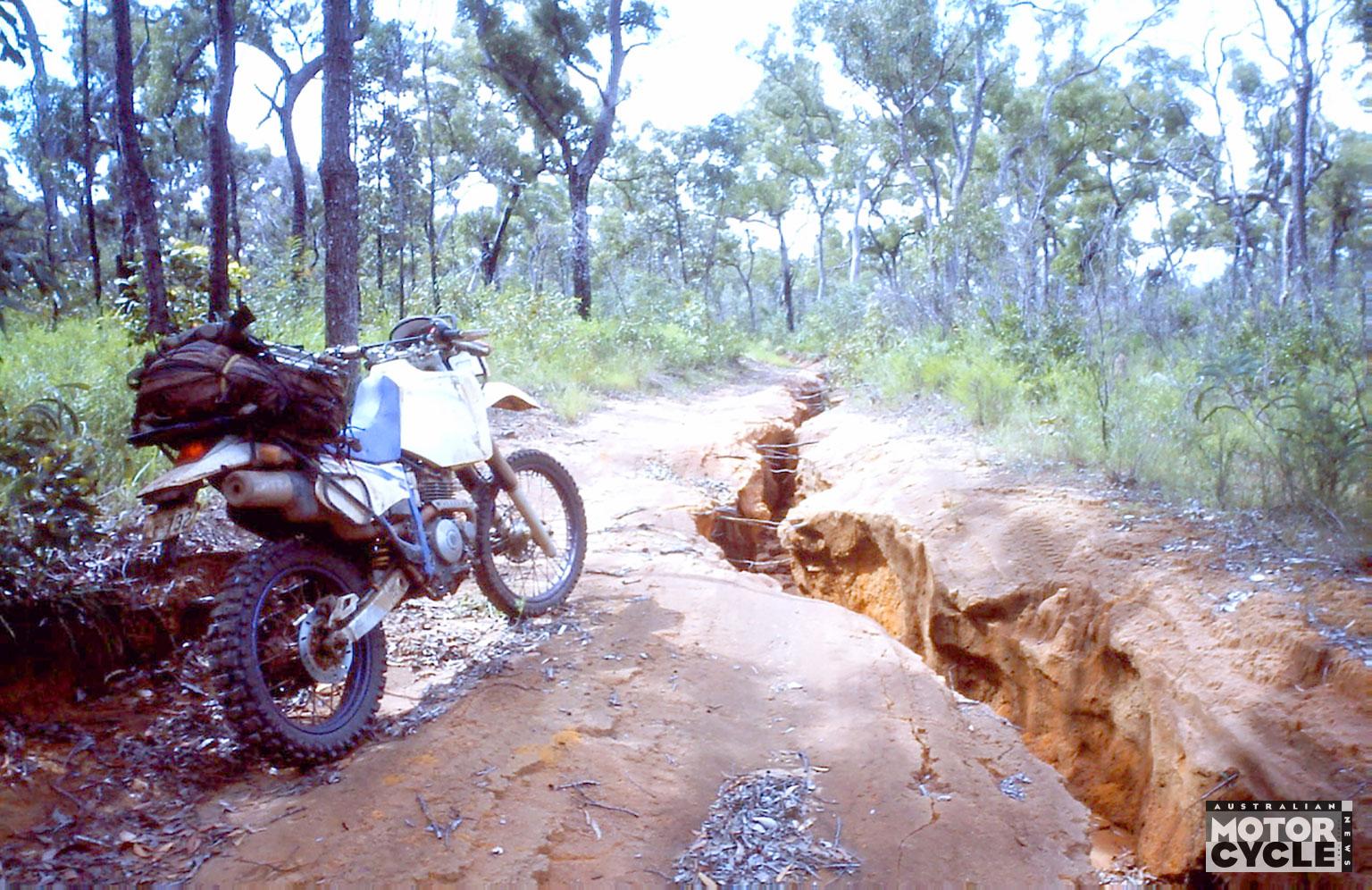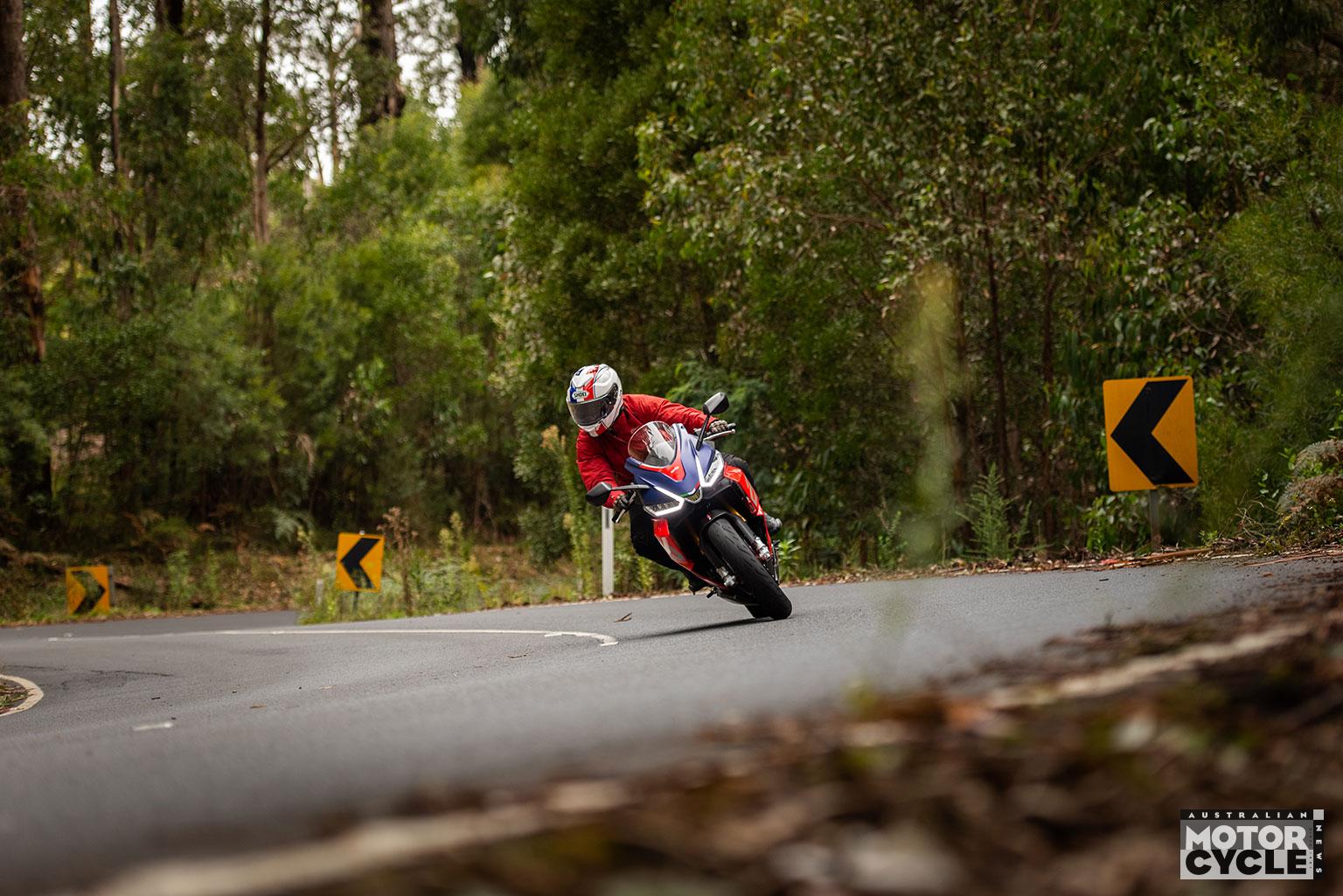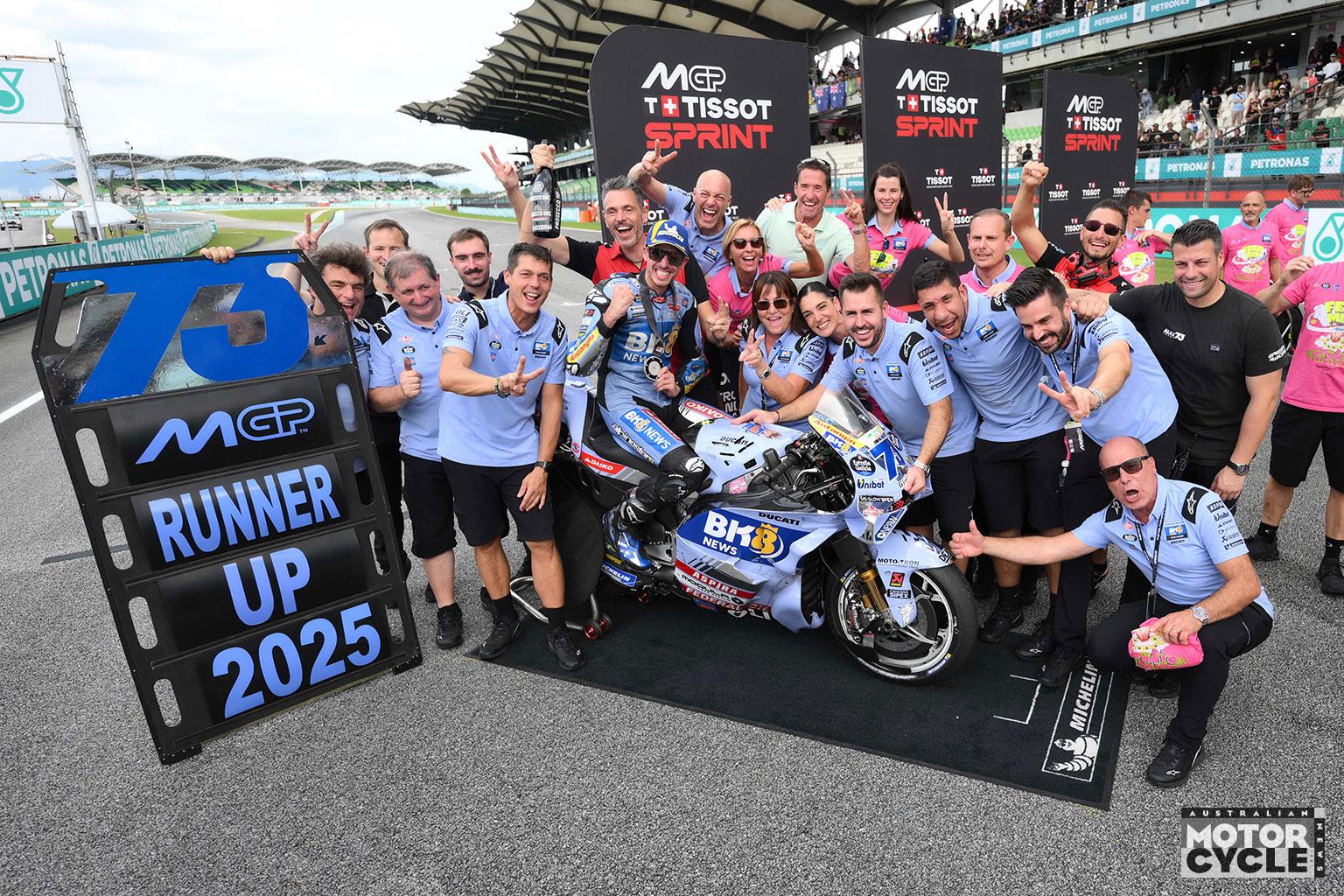What does the MotoGP aero evolution mean for motorcycling?
Whether you believe the trend towards exotic aerodynamics is destroying MotoGP or marks the next huge step forward in motorcycling there’s no question about it – a Pandora’s box has been well and truly opened and, regardless of upcoming changes to racing regulations, aero will play a huge role in the future of bikes both on the track and the road.
The current trend for aero addenda has been with us for nearly a decade, but it’s a fast-moving field and aerodynamics remain something of a black art, so the precise purpose of each new growth is often unclear. However, as time passes a growing number of MotoGP participants have filed patent applications for elements of their aero, and delving into those documents gives an insight into their intentions.
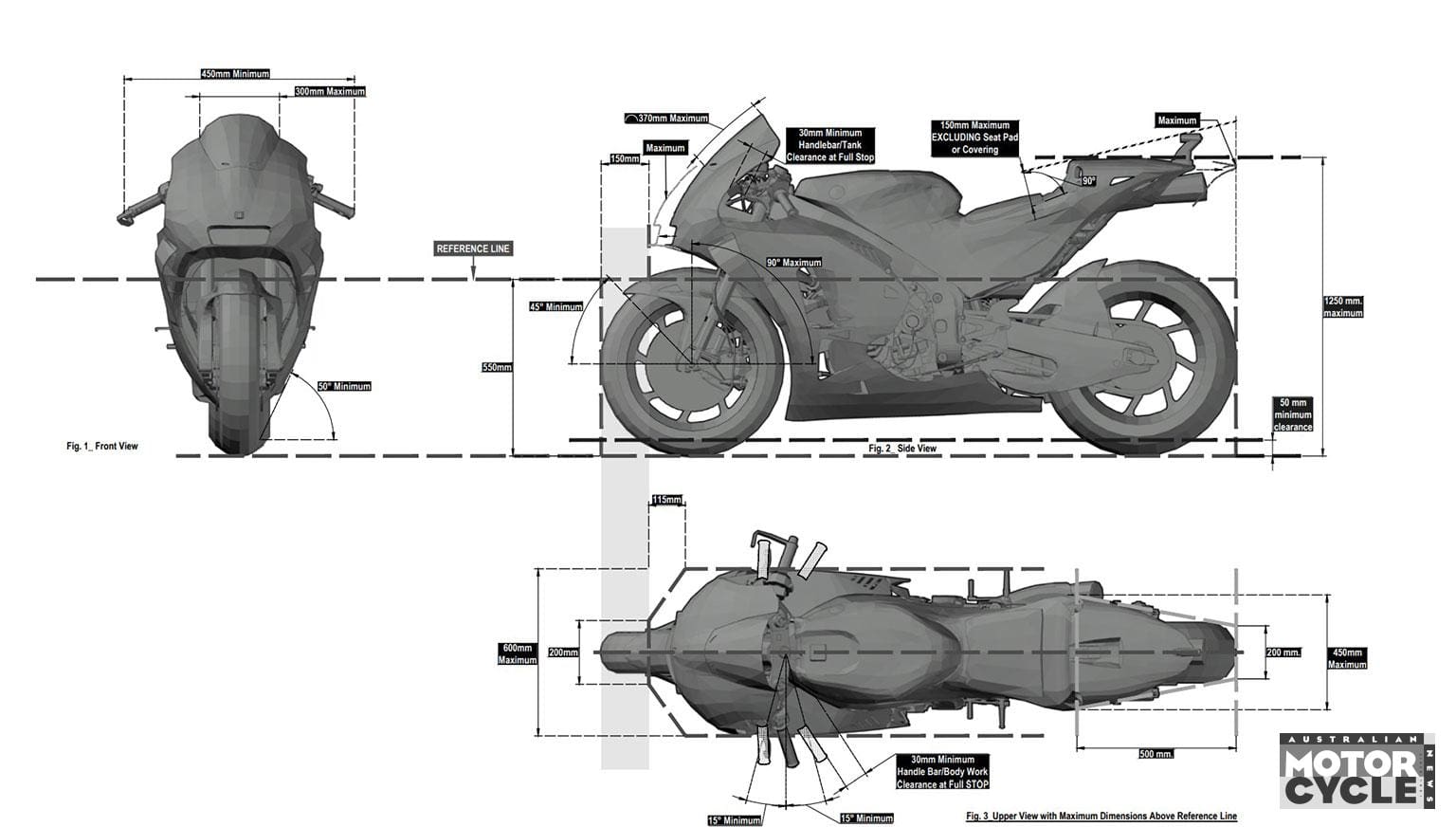
Motorcycles have lagged decades behind four-wheeled racing cars when it comes to exploiting aerodynamics for downforce, but that’s not down to complacency from engineers. A car is a relatively stable aerodynamic platform, staying largely parallel to the ground during acceleration, braking and cornering. Aerodynamicists are able to use that consistency to their benefit and have been exploiting the benefits of wings since the 1960s, expanding to much more effective ideas like ground-effect in the 70s and 80s. Even with that comparably consistent ride height, pitch, roll and yaw, there are plenty of instances where race car aerodynamicists have got it wrong, leading to vehicles that have been unstable or inefficient.
Top aero experts are today valued as highly as drivers in the upper echelons of motor racing, as illustrated in F1 by designer Adrian Newey’s recent signing with the Aston Martin team, a deal rumoured to be worth as much as $A58 million per year! With a record of designing cars that have won 12 constructor’s championships and 13 driver’s titles, Newey is seen as the closest thing there is to a silver bullet guaranteeing success.
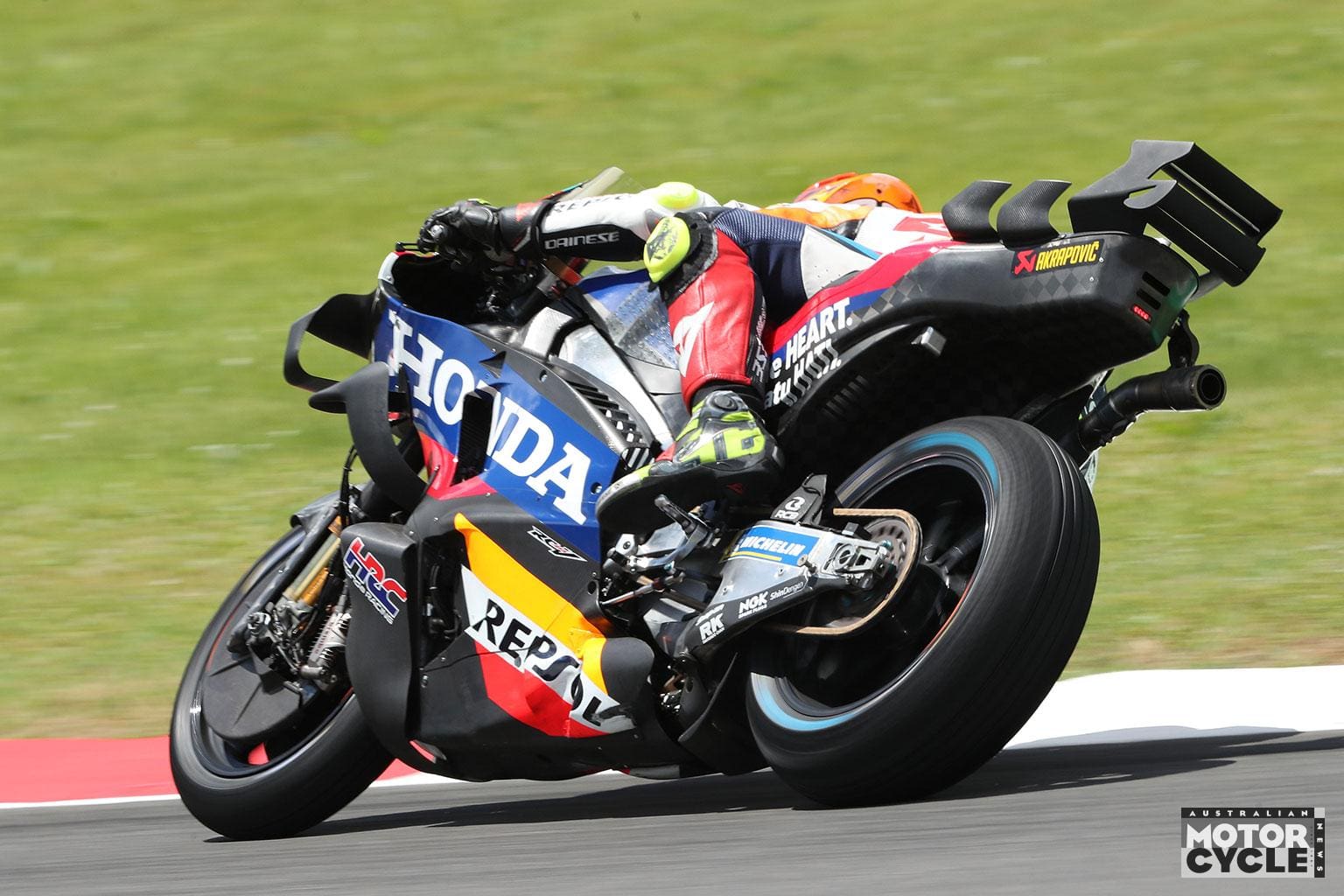
But motorcycles are a much more challenging prospect. Unlike a stable car, with all four wheels firmly planted on the ground, GP bikes roll as much as 70 degrees in each direction into corners, wheelie during acceleration, often drift sideways into bends and lift the back end under braking, with each move altering the way that the air hits the bodywork.
What’s more, as in virtually every form of racing, MotoGP aerodynamicists are tied down by strict rules governing where they’re allowed to place bodywork. So despite being at the razor’s edge of two-wheeled design, the shapes seen on the latest racebikes are massively compromised
by the rulebook.
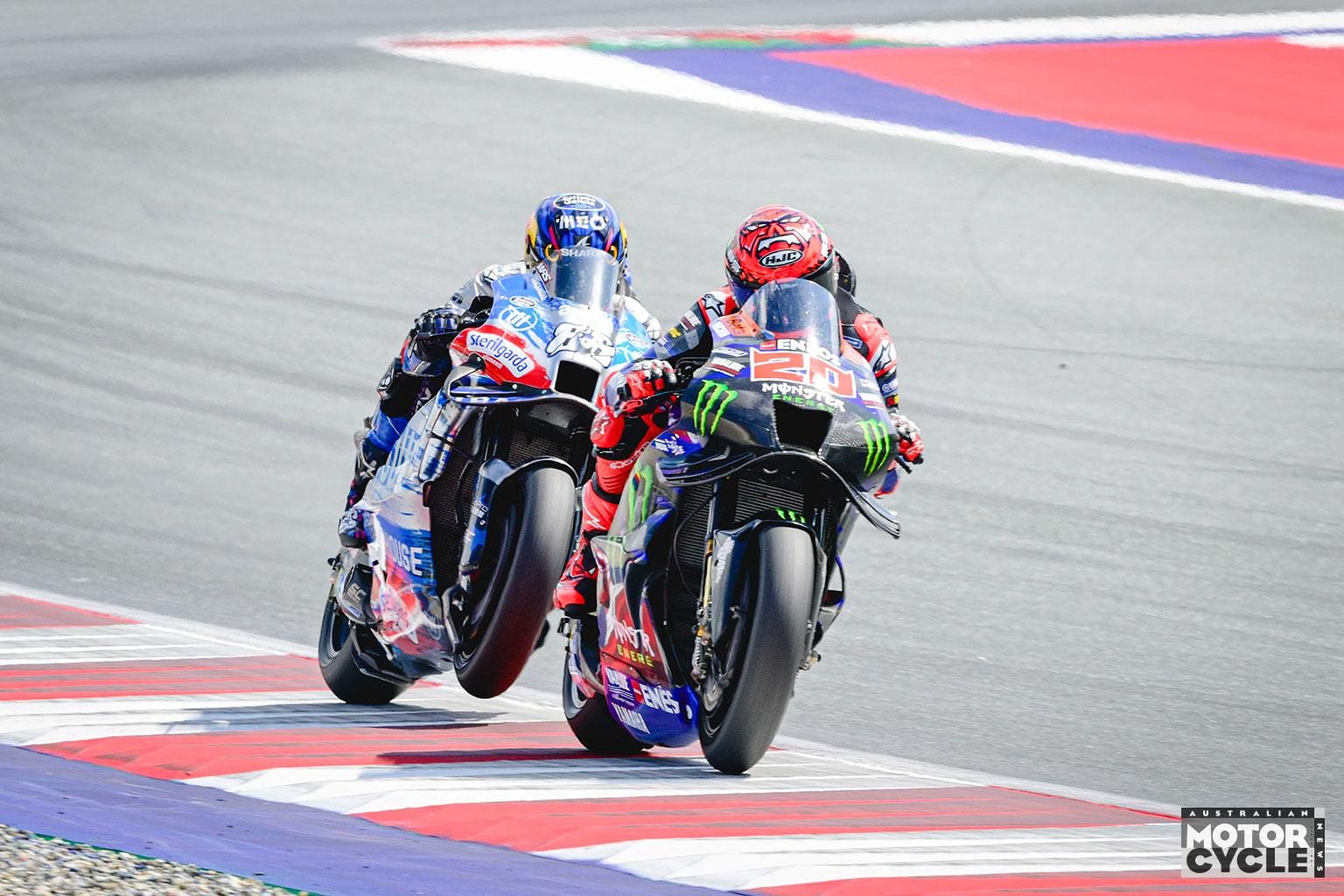
Winglets
The things that first spring to mind at the mention of modern MotoGP aero are the front winglets. Although fairing and nose-mounted winglets have been tried several times in the history of bike racing – MV Agusta makes a claim to having been the first, with some surprisingly modern-looking wings it debuted way back in 1972 – the current aero war really started in 2015 when Ducati added stubby nose and side-mounted wings to its GP15. (Although the 2010 GP10, notably created with aero input from F1 engineer Alan Jenkin, had already dabbled with the idea.) The GP15, though, really exposed their potential and over the coming months the wings rapidly grew and became more complex – check out the Ducati GP16 by the end of that season for their ultimate evolution – before being banned, at least in theory, for 2017.
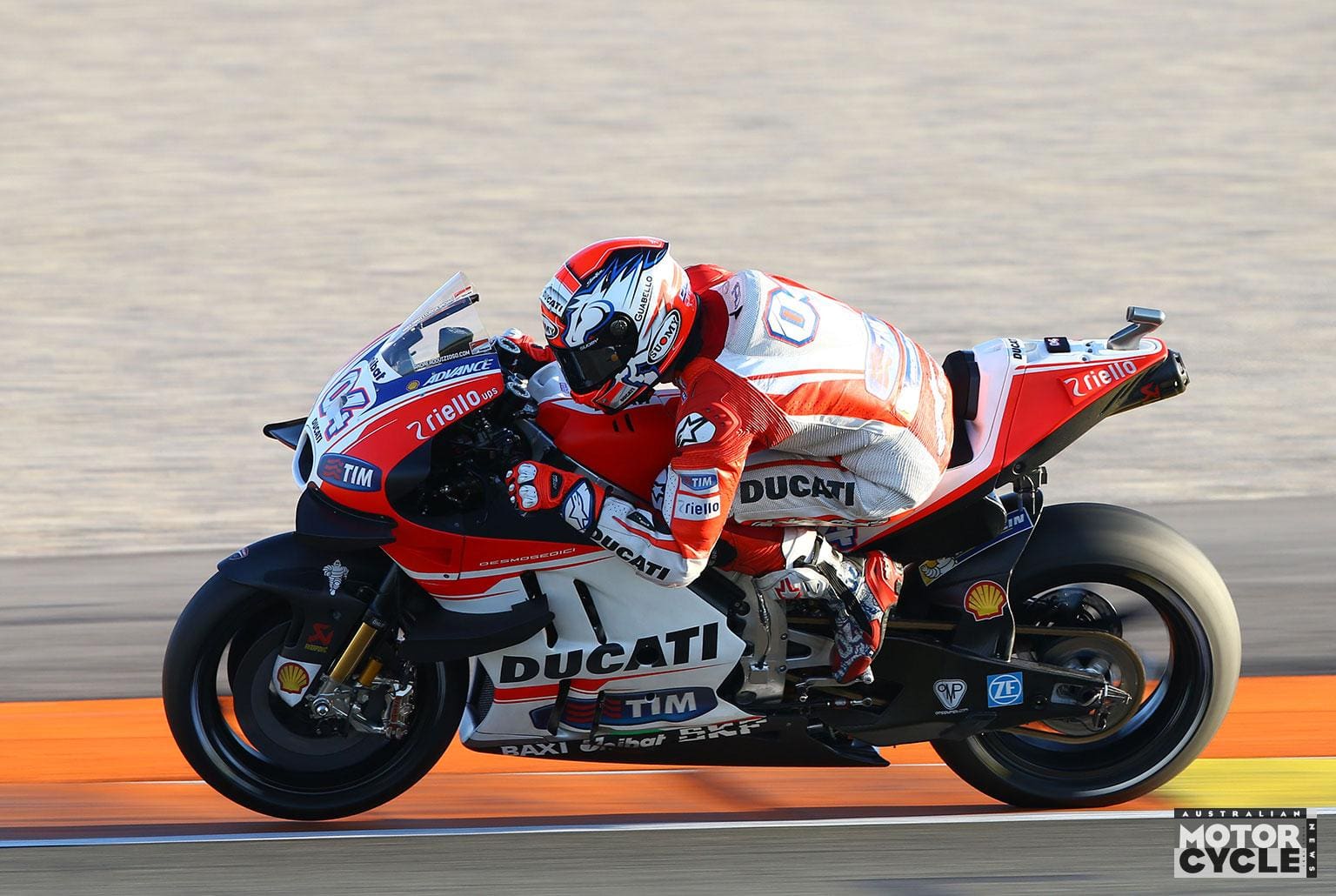
In reality, that 2017 ban simply put an end to the individual wings, often with car-style end-plates, seen in the previous year. In their place came the sort of looped-over, biplane-style winglets that have prospered since, working within a rule-set that puts limits on the radii of their edges in the name of safety. The benefits of the winglets were simply too great for constructors to just get rid of them.
Given their visual similarity to the front wings on single-seat racing cars, it would be all too easy to leap to the conclusion that a motorcycle’s front winglets, mounted either side of the nose, perform a similar job. But that’s not quite the case.
On a racing car the front wing’s first job is to create downforce during corners, pushing the front tyres towards the ground to increase their grip. In a straight line, the wing is more hindrance than help, creating aerodynamic drag and, without careful design, messing up the airflow over components behind it.
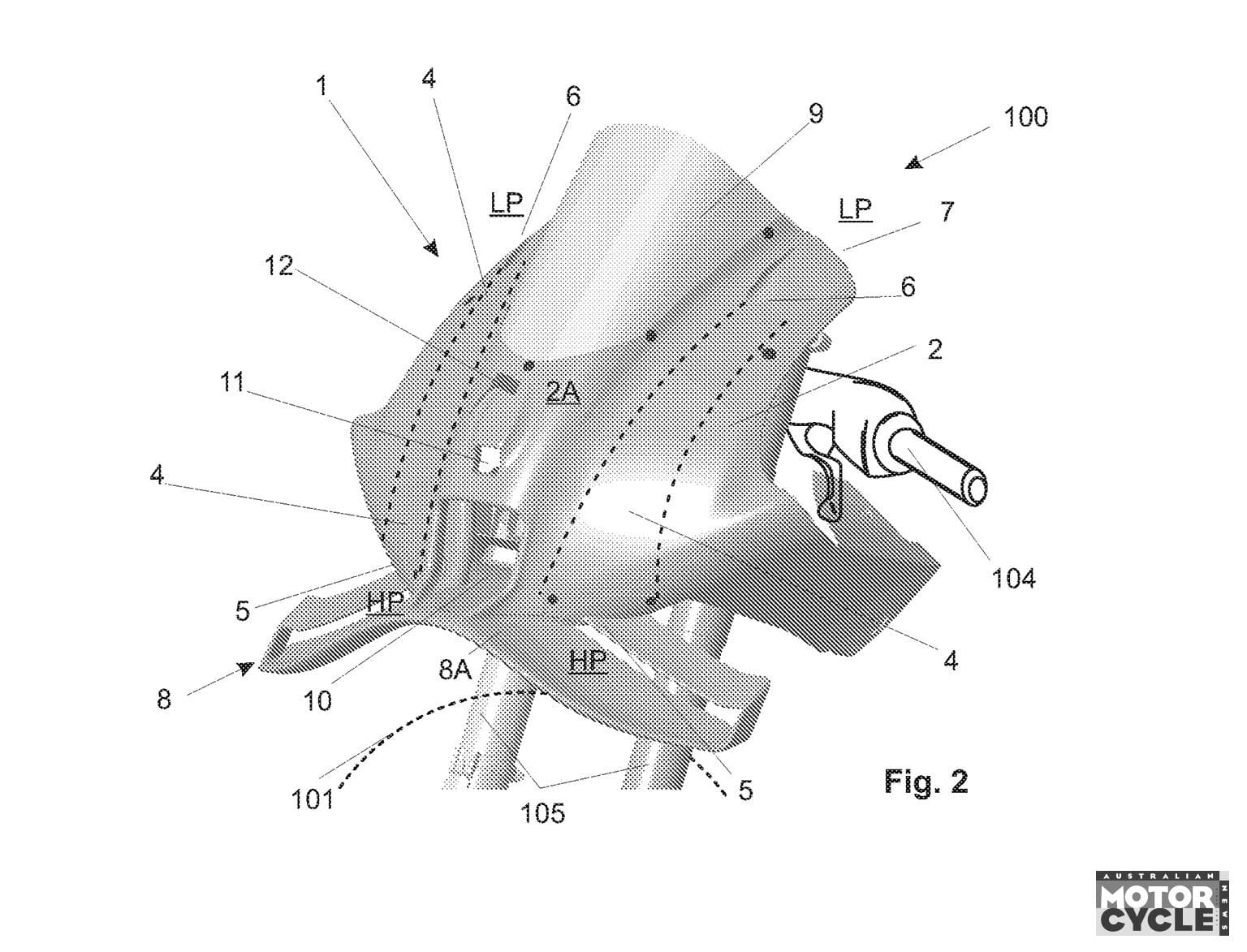
On a motorcycle, however, the winglets’ main job is on the straights. Unlike a car, a MotoGP bike’s combination of grip, acceleration and a high centre of gravity means it can wheelie or even flip over backwards. Front winglets help push the nose down on the straights, reducing the tendency to wheelie and allowing the rider to accelerate harder without the nose lifting. So rather than improving grip, the winglets aid acceleration. You’ll notice that most MotoGP bikes put these front winglets as far forward as the regulations allow. That’s because the farther forward they are, the more leverage they have when it comes to preventing wheelies – think of the ‘lever’ as being the distance between the winglets and the rear wheel spindle.
The next big MotoGP rule shakeup in 2027 sees the nose bodywork moved backward and the maximum width reduced for smaller, less-effective winglets.
There are useful side-effects on front grip as well. Although a winglet will introduce drag, and hence reduce top speed, the faster the bike is going, the more downforce it generates. That means at the end of a straight, when riders hit the brakes, the front downforce is at its maximum, pushing the nose down, giving more grip for harder braking.
So while a car’s wings are mainly used to improve corner speed, the biggest function of a bike’s winglets is to improve acceleration and braking.
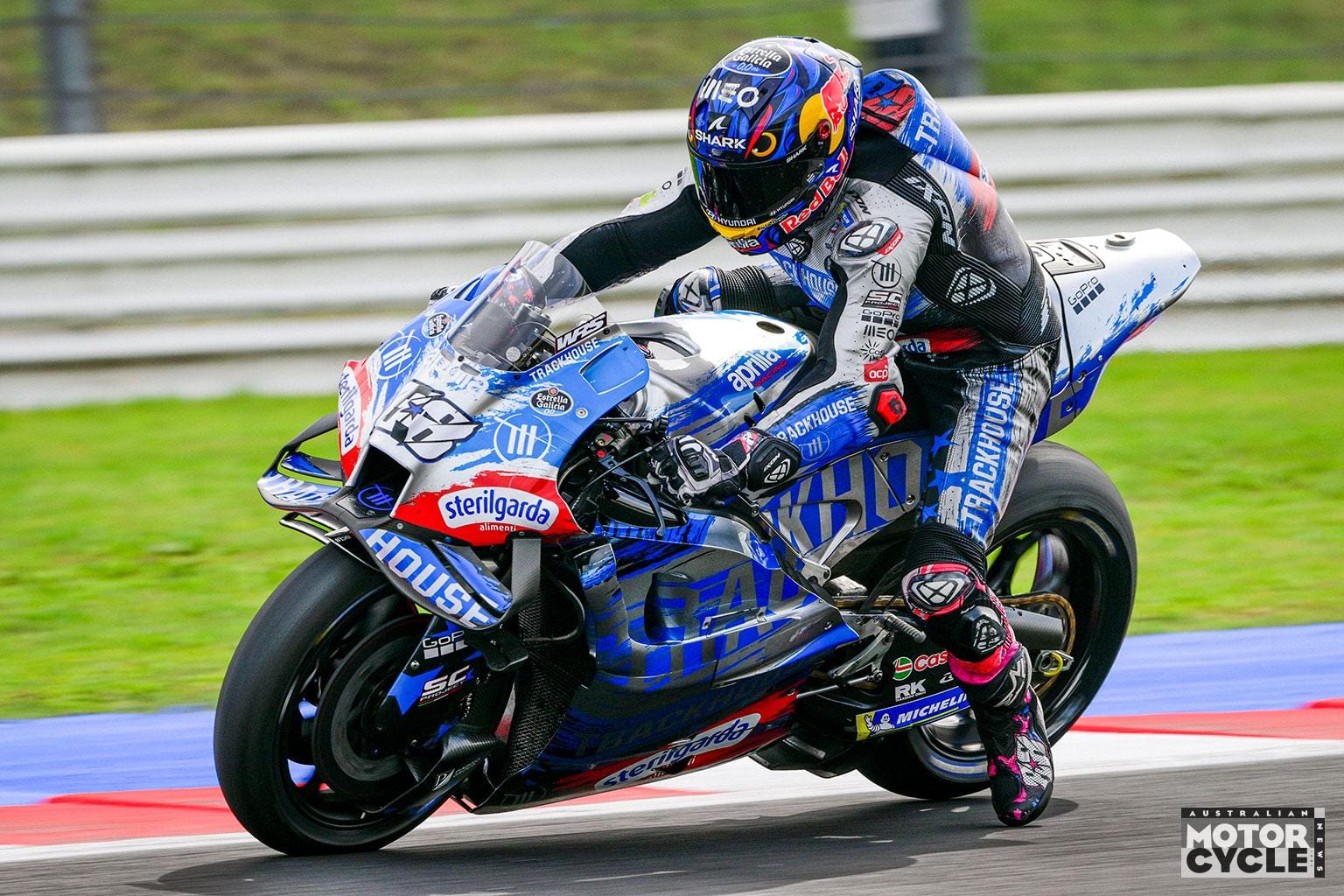
Can they help during corners as well? To an extent. A GP bike can lean as far as 70 degrees, turning the winglets nearly on their sides so their downforce becomes an outward force. Not only is the air coming at the bike at an angle as it changes direction, but the rider hangs off, with elbow, shoulder, knee and body creating a blockage that disrupts the airflow behind the winglet on the inside of the corner, reducing its effectiveness. Meanwhile, the winglet on the outside of the nose gets exposed more clearly into the flow. Because the winglets are usually angled downwards, the section that’s most effective during corners is actually near horizontal when the bike is leant over, creating cornering downforce.
Brake cowls and ducts, fork cowls
If you gave an aerodynamicist absolute freedom to make the most efficient bike imaginable, the first thing he’d probably do is wrap the bodywork all around the front wheel. After all, on pretty much every motorcycle on both road and track today, the very first part to touch the airflow is the front tyre. It’s not the most aerodynamic shape and, worse still, it’s rotating, which adds a whole new set of complications to the aerodynamics around and behind it.
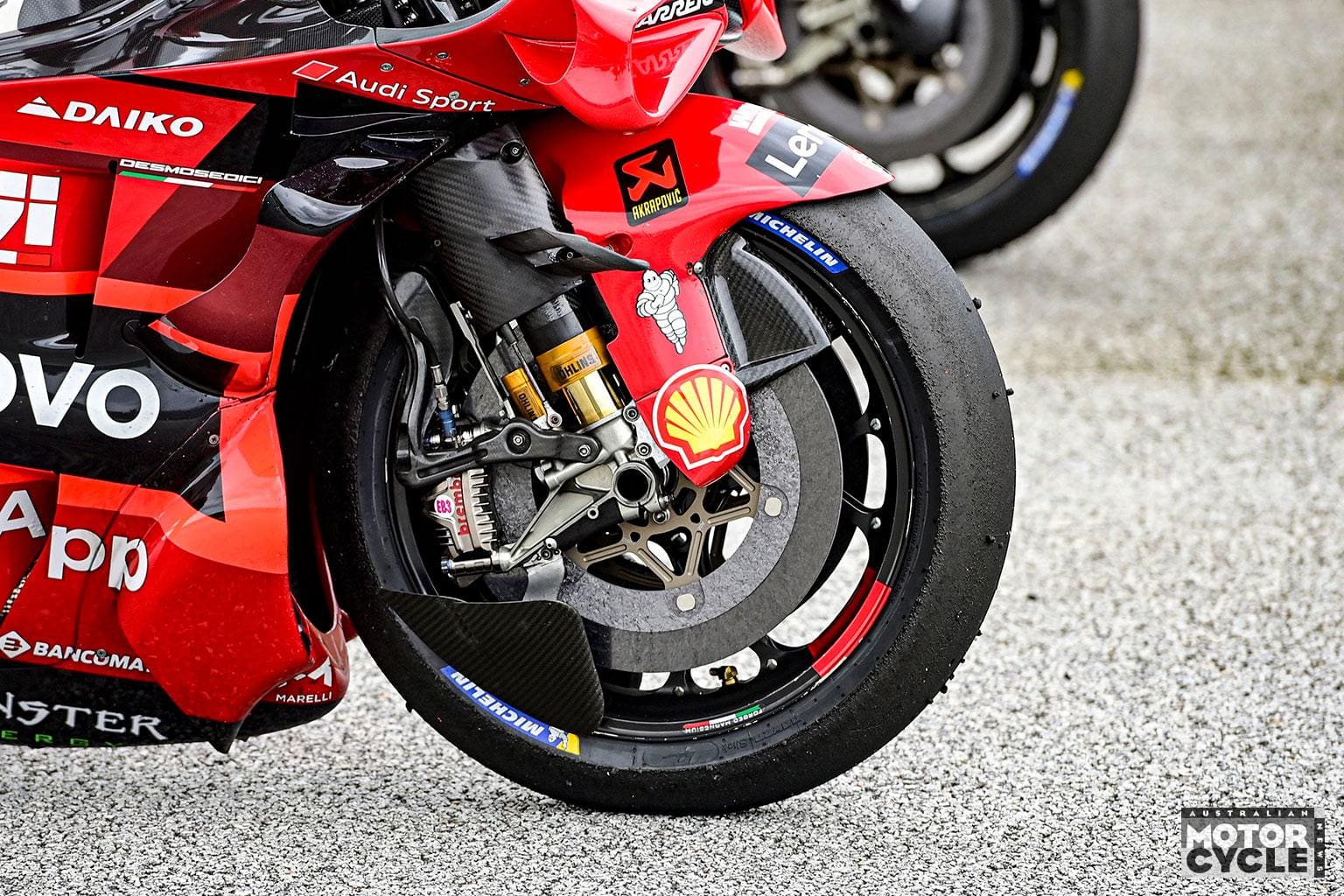
Of course, there was a brief period in the 1950s when GP bikes adopted all-enveloping ‘dustbin’ fairings, almost entirely enclosing the front wheel and creating a bullet-shaped nose to split the air at the front. They were banned at the end of the 1957 season, ostensibly for safety reasons, and ever since then the rulebook has maintained that the front wheel must be visible from the side.
In today’s regulations, the FIM requires that ‘the whole of the front rim other than the part obscured by the front fender, forks, brake parts or suspension attachments’ must be visible from the side. And to stop aerodynamicists from exploiting those exceptions, there are strict limits on how far the front fenders can extend. As well, all the aero components in that area are considered to be part of the ‘aero body’ of the bike, and thus limited in terms of how many updates can be made per year.
The lesson from all this? In short, all the aero bits that you see around the front wheel and fork aren’t ideal; they’re the best that engineers can manage within the strict constraints of the rules.
The front fender itself is fairly self-explanatory, and usually shaped to deflect air around the lower part of the fork, so it merges their tubular legs into something that’s a bit more wind-cheating.
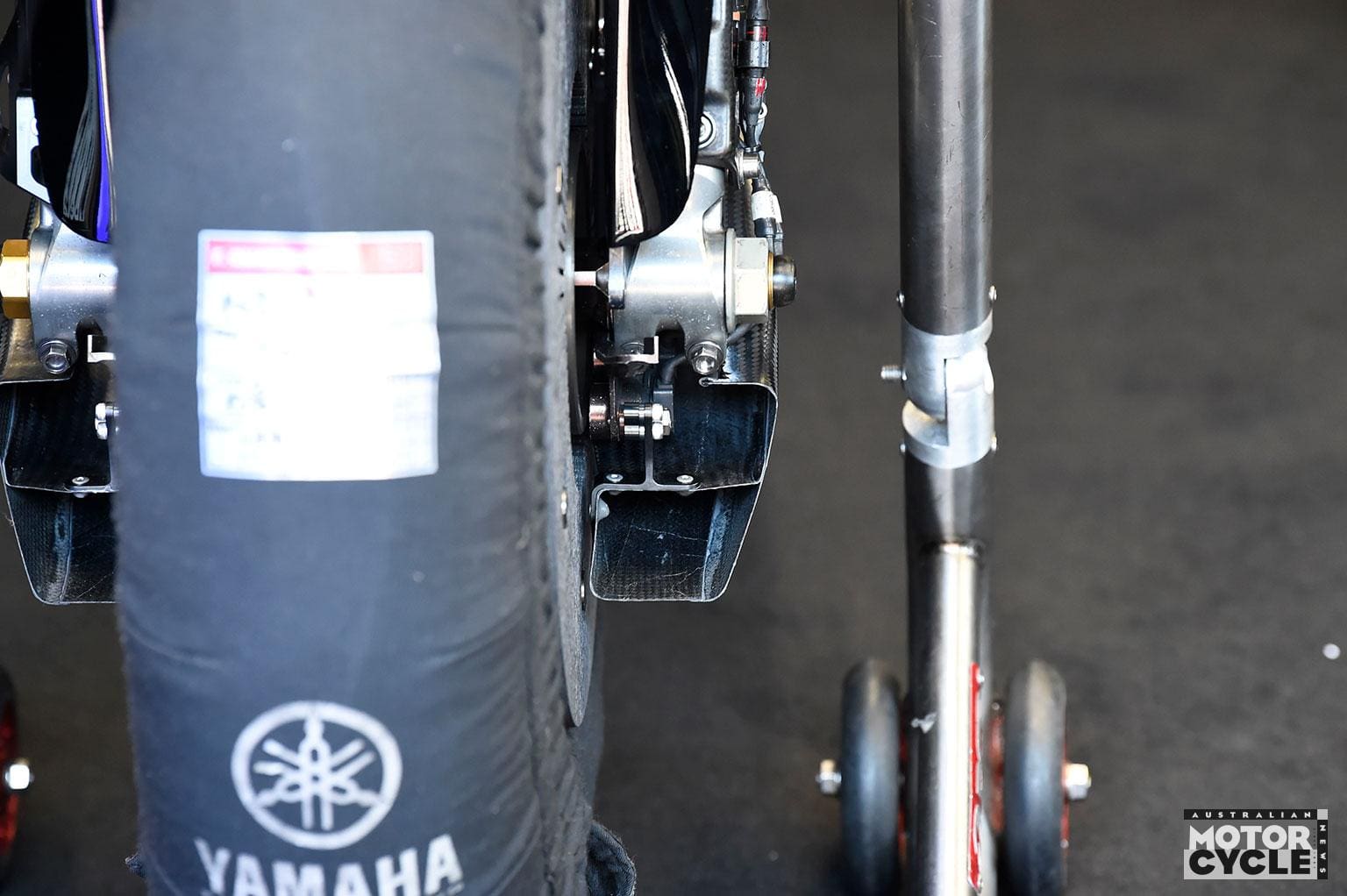
While the wheel rim needs to be largely visible, the rules leave an opening to play with brake ducts and aero components inside the perimeter of the wheel, often changing from track to track or rider to rider, with the intention of keeping the brakes within their ideal operating temperature range. That could mean cooling them in warm weather at tracks with lots of heavy braking, or brake covers to keep the temperature up when it’s cold or wet, or when there are fewer hard stops on the track. Teams also be swap the size of the brake discs – 320mm, 340mm and 355mm are all common – depending on cooling needs.
We’ve seen a growing number of bikes sprouting fin-like protrusions covering the lower section of the wheel, angled to match the sides of the fairing. These appear to be intended to either smooth airflow behind the wheel as it hits the lower fairing, or to work as miniature ground-effect floors when the bike is at maximum lean mid-corner, creating some localised downforce on the front tyre, as well as helping to clean up the airflow going from the front wheel to the lower sides of the fairing.
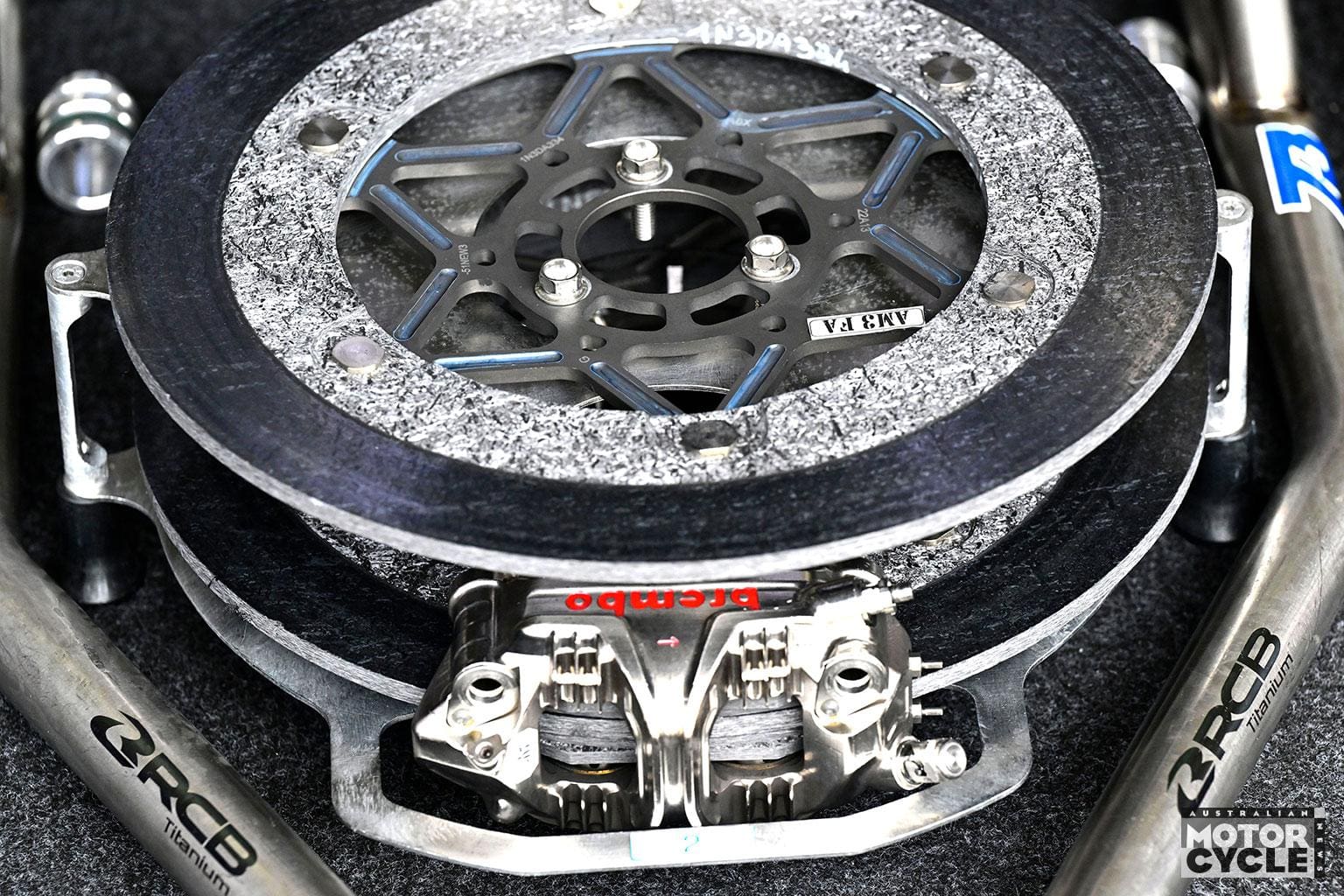
Higher up, we’ve seen several bikes using tapered cowls around the upper section of the fork legs, helping to reduce the turbulence they create and smoothing airflow into the radiator intake, improving its efficiency.
Front fairing edge and bellypan ‘chin’
For decades, the trend in MotoGP aero – followed by streetbikes – was to allow the front side edges of the fairing to extend forward, essentially tucking the upper rear section of the front tyre inside the fairing when seen from the side. That’s all changing now, with GP bikes from the last few years introducing a higher nose and a clear gap between the front wheel and fairing when seen in profile. Again, it’s filtering through to streetbikes, with the new 2025 Ducati Panigale V4 adopting the same stance – compare the original 2018 Panigale V4 with the new 2025 version to get a really clear illustration of the change. Ducati explains that the reduction of side area helps bikes tip into corners at high speed and reduces the influence of side winds.
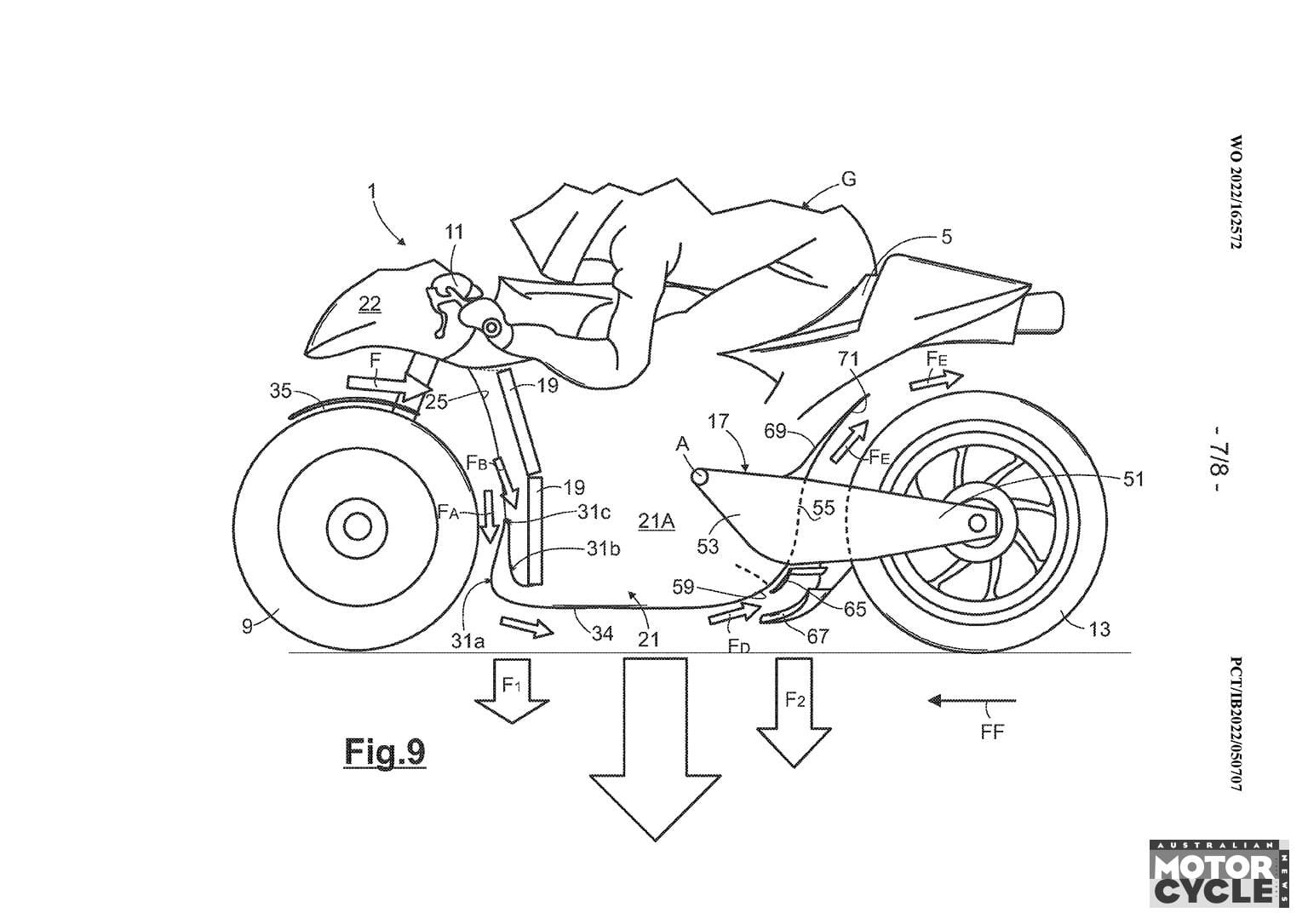
Aprilia and KTM were at the forefront of this change, both adopting a huge gap between the front wheel and the fairing in their 2020 racebikes. In the years that followed, Aprilia in particular started to put even more focus on this area, introducing a scoop-like chin at the front edge of its bellypan in 2020-21, which has only grown since then. The idea, according to Aprilia’s own patents around the design, is
to use that scoop to slow airflow in front of the radiator. Decelerating the air increases its pressure, improving the flow through the radiator, with knock-on benefits in terms of a smaller radiator and less frontal area.
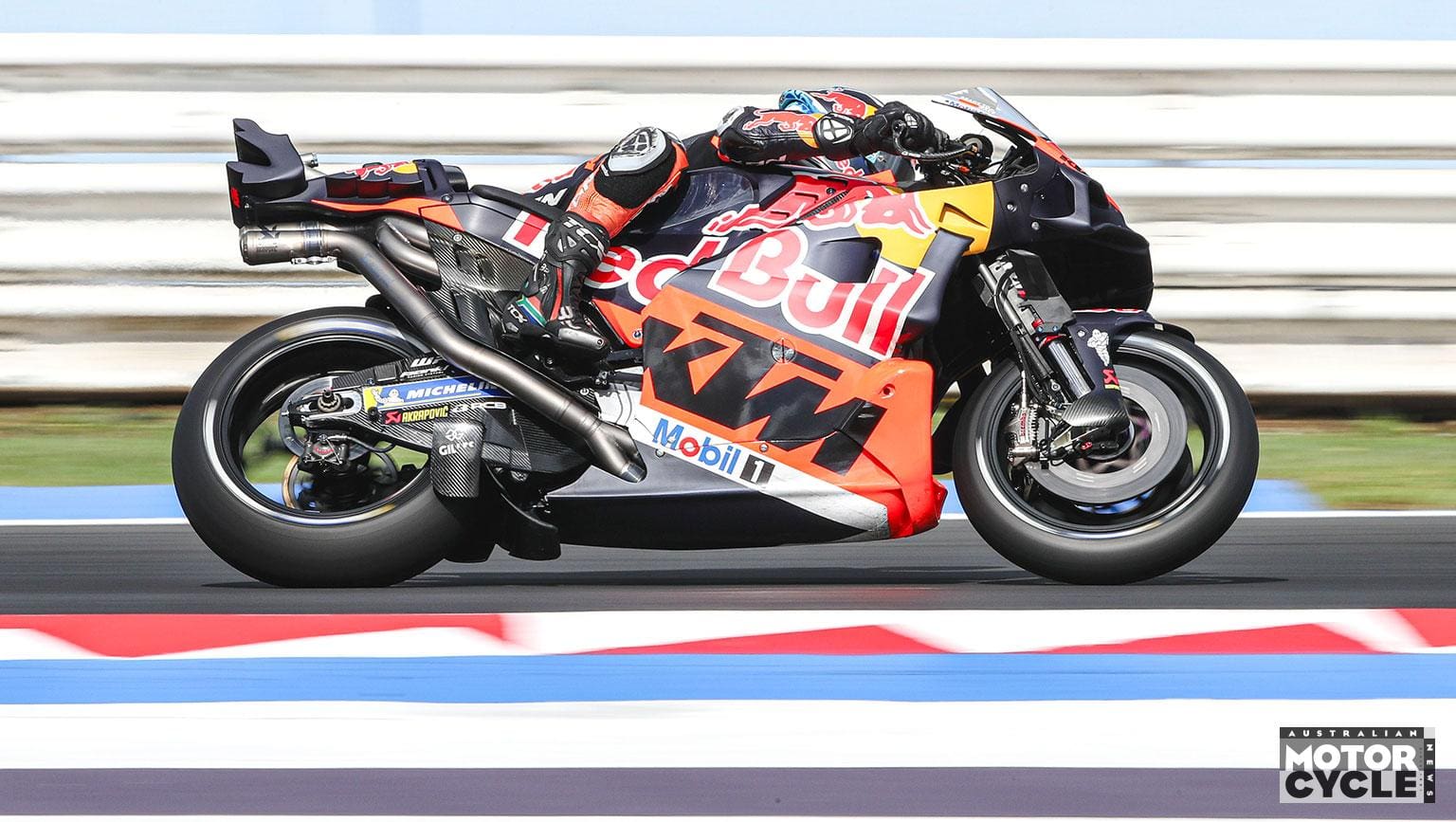
Below that scoop, there’s a rounded lower front edge to the fairing that helps accelerate the air that doesn’t enter the scoop, turning it underneath the bike’s belly. As the air accelerates, its pressure decreases and the result is a measure of extra downforce. KTM has also used a similar design for several years, and others are increasingly following suit.
Downwash ducts
In 2021 Ducati introduced ‘downwash ducts’ on its MotoGP bike’s lower side fairings, and it’s an idea that – after a slow start – has since been copied across much of the grid.
These ducts, one on each side of the bike, just behind the front wheel, grab air and turn it nearly 90 degrees, firing it out underneath the bike. At first glance they’re illogical: after all, if you want downforce, why fire the air downwards? Of course, the reality is much more complex than that.
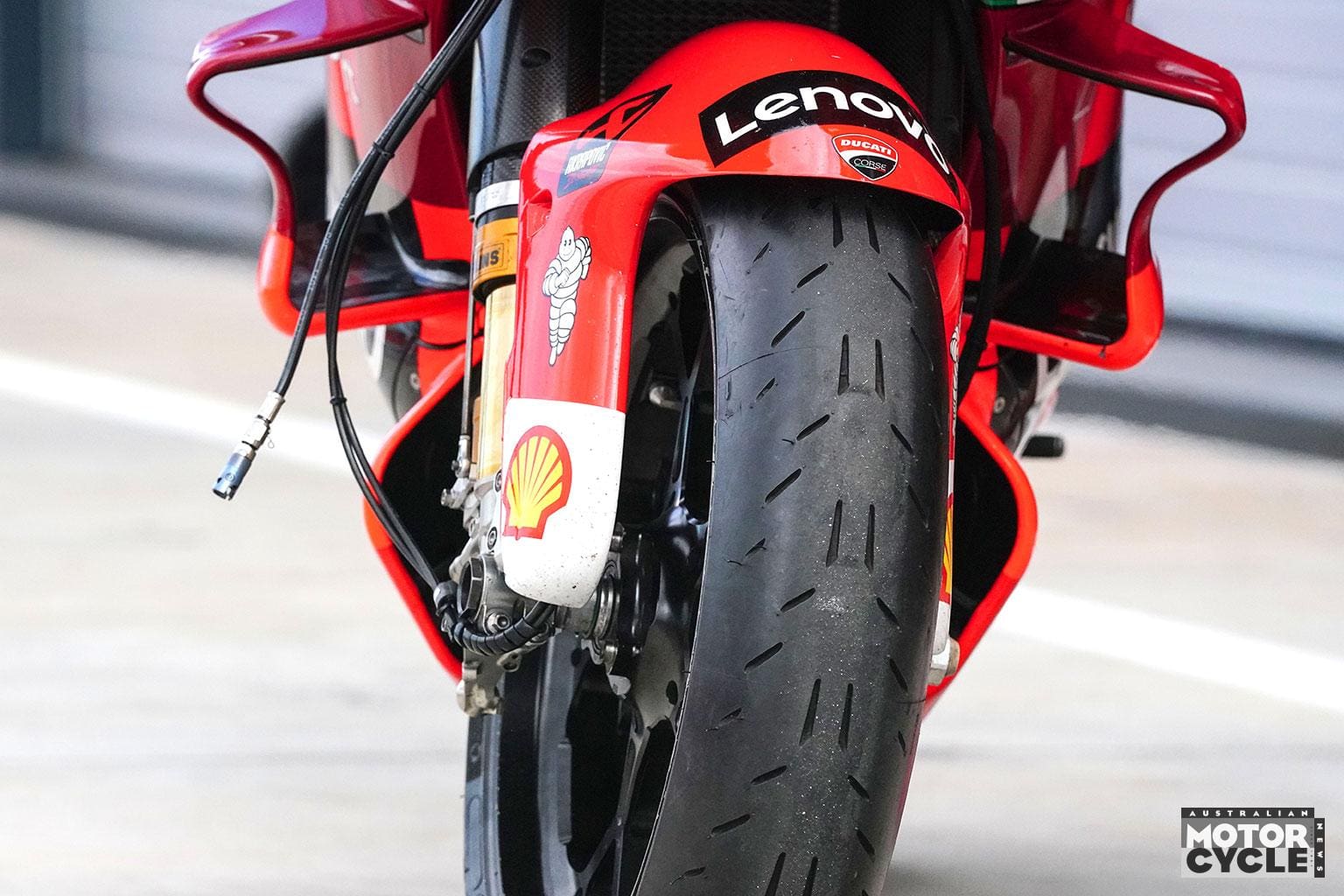
The ducts might appear to have large, draggy intakes, but they’re positioned just where the messy, disturbed airflow spilling off the front wheel and brake reaches the front edge of the fairing. They scoop up that turbulent air and funnel it down into the area under the fairing where the wake of the front tyre creates a low-pressure spot that’s once again turbulent. The result, in a straight line, can be a reduction in drag, but there’s more to it than that. By redirecting ‘dirty’ air away from the fairing sides, the areas of the fairing behind the downwash ducts get relatively clean, high-speed, low-pressure airflow over their surfaces.
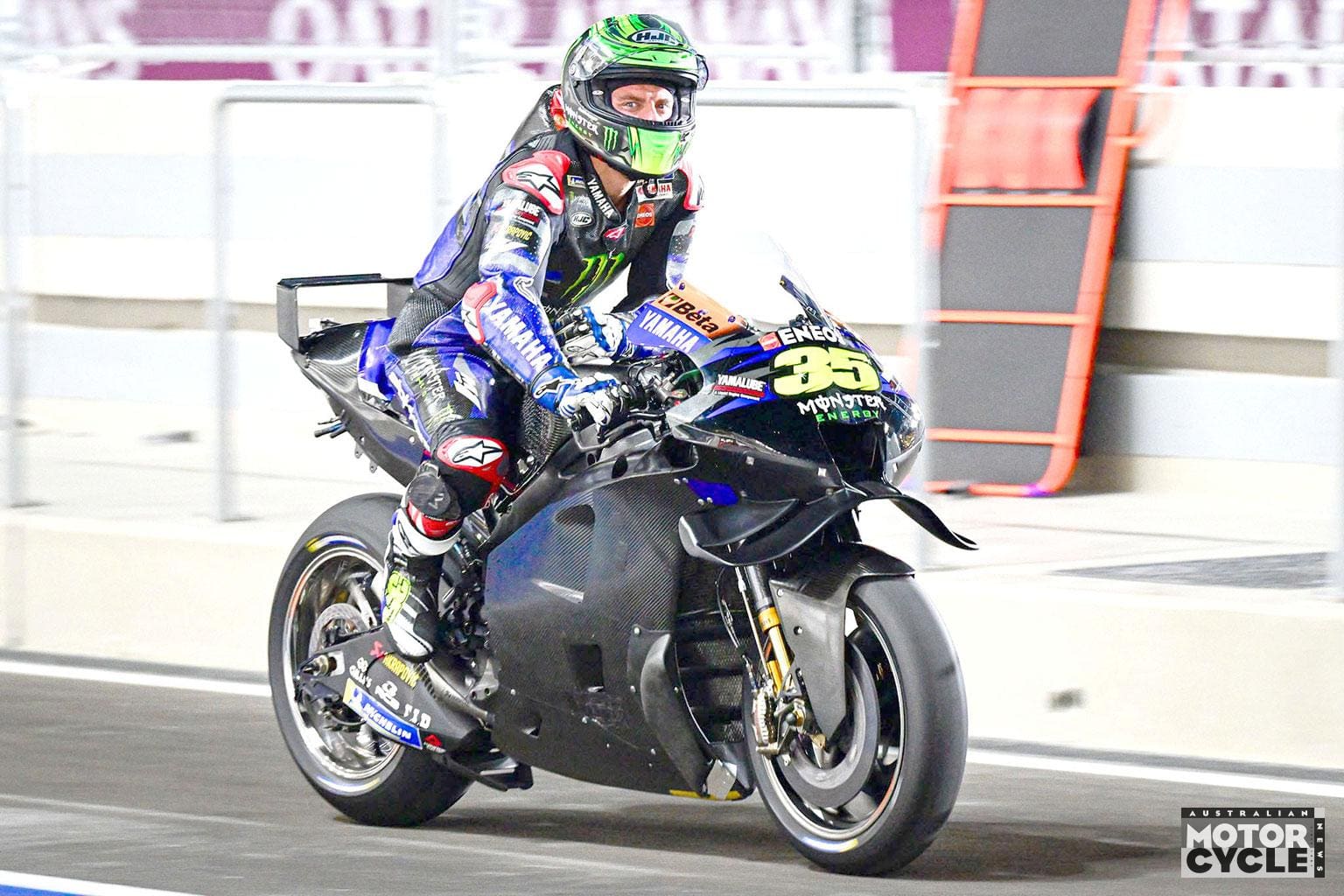
That works to a bike’s benefit. Yamaha, for example, recently filed a patent for its downwash ducts, emphasising that the high-speed, low-pressure airflow running cleanly over the bodywork behind the ducts could improve the effectiveness of cooling vents in the fairing – allowing a smaller radiator to be used, cutting down on frontal area and drag.
Even without a radiator outlet on that part of the fairing side, the low-pressure area behind the downwash duct should increase downforce, particularly when a bike is cornering and the fairing side is close to the tarmac.
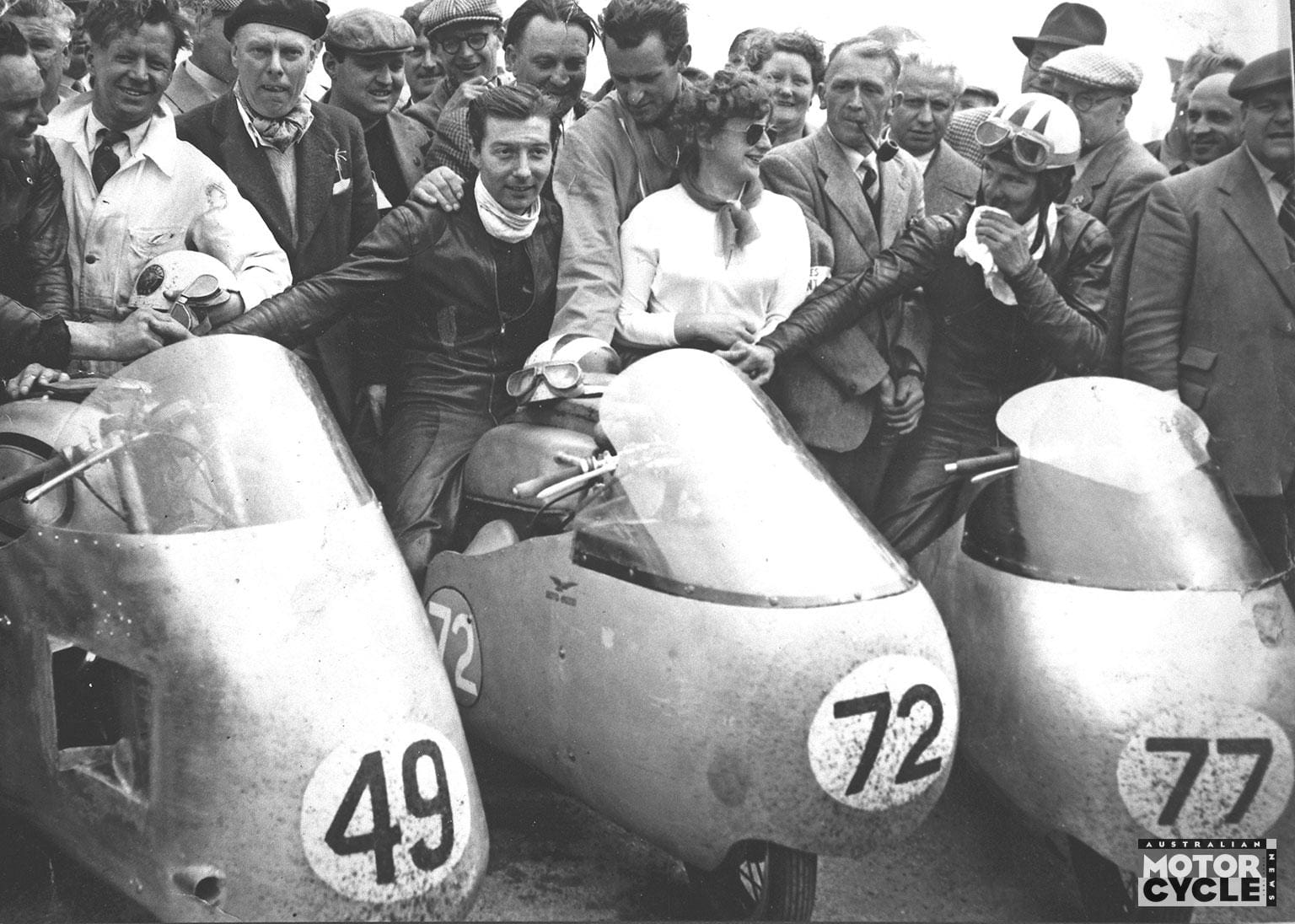
Ground-effect fairing sides
And that brings us to ground-effect fairing sides – bulging sections of lower fairing panels that are designed to work in harmony with the track surface when the bike is at maximum lean, creating a ‘floor’ that’s similar to that of a racing car. This fairing shape, which was again pioneered by Aprilia but has since been tried by most of the bikes on the grid in one form or another, is one of the few MotoGP aero ideas that we’ve yet to see make the transition to streetbikes. That’s probably because it’s a concept that relies heavily on riders maximising lean angle to get the system to work – the fairing side needs to be as close as possible to the asphalt to generate downforce.
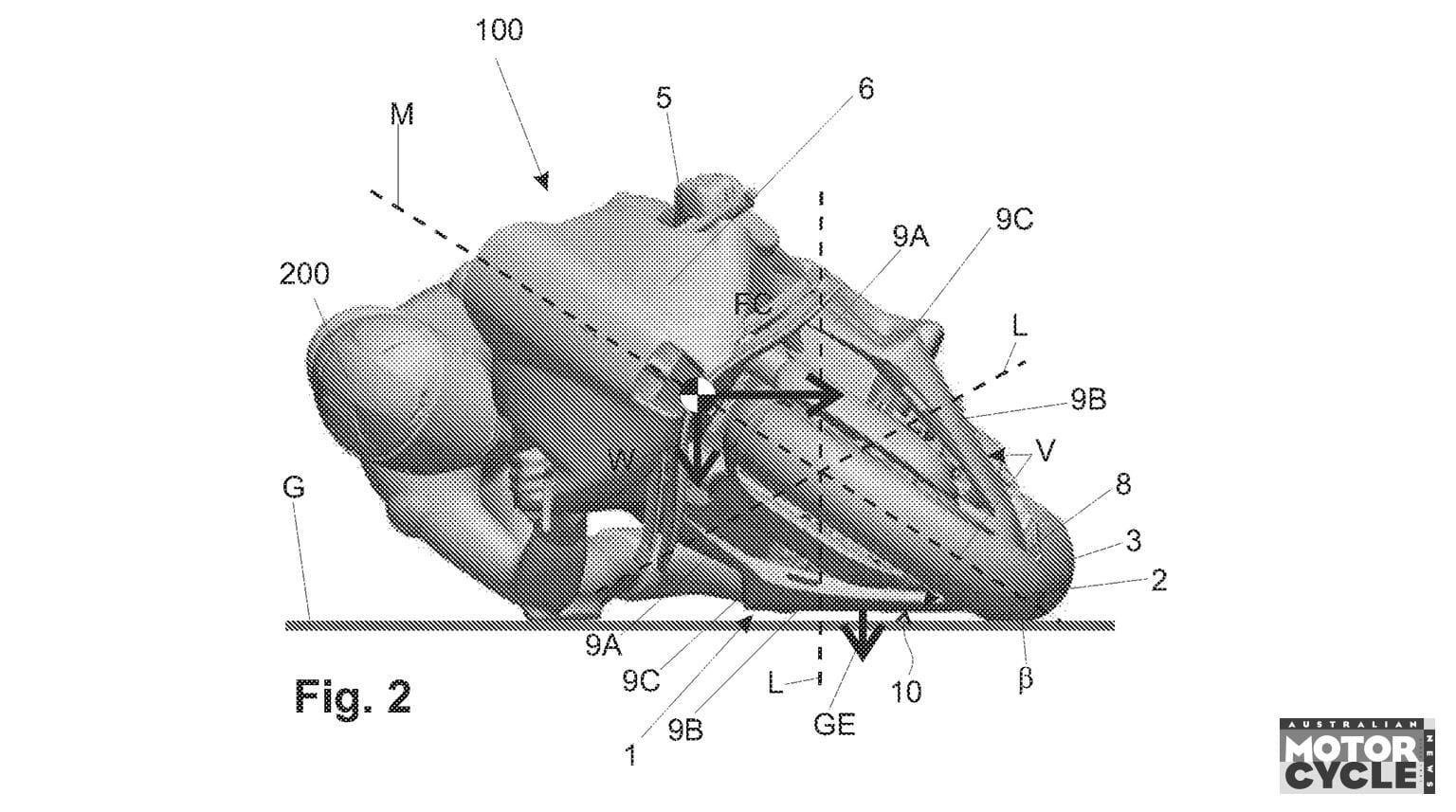
Until recently, bulging, ground-effect side fairings like those pioneered by Aprilia tended to be seen only on bikes without downwash ducts at the leading edge of the low fairing. In 2023 it was particularly visible on Ducati’s GP bikes, which regularly swapped between bulging fairing sides and downwash ducts. But recently we’ve seen a combination of downwash ducts and bulgy side fairings, notably on Ducati’s latest GP24.
Swingarm spoon/rear fender
Although not consistently used across the MotoGP grid, the ‘spoon’ under the swingarm was one of the first controversial aero elements to start appearing a few seasons ago. At their introduction, there were several explanations for these components, ranging from deflecting water from the rear tyre to cooling the tyre with airflow, but once the under-swingarm components were deemed legal, the spoon or swingarm spoiler has become very much part of a bike’s aero addenda.
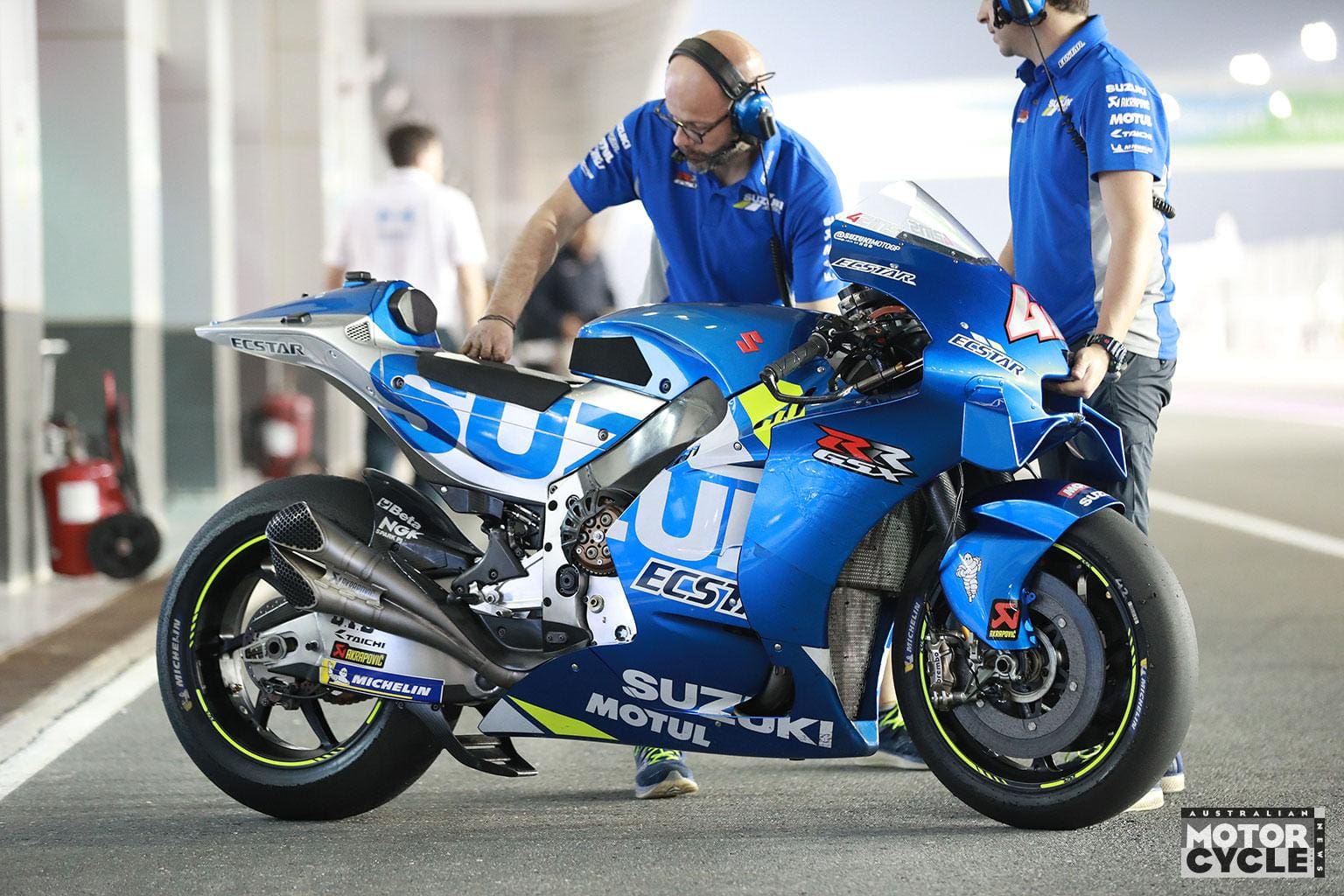
Once again, we can turn to Aprilia’s patent filings to see a clear explanation of the component, with one 2022 document saying “adhesion can be further increased using an upside-down airfoil integral with the rear fork… The airfoil is upside-down, in the sense that the high-pressure surface, along which the airflow decelerates, is facing upward and the low-pressure surface, along which the airflow accelerates, is facing downward.”
In other words, it’s another winglet. On Aprilia’s design, it works in harmony with the rear fender and the under-seat area of the bike, with air scooped up by the under-swingarm spoiler flowing over the rear wheel and exiting below the seat.
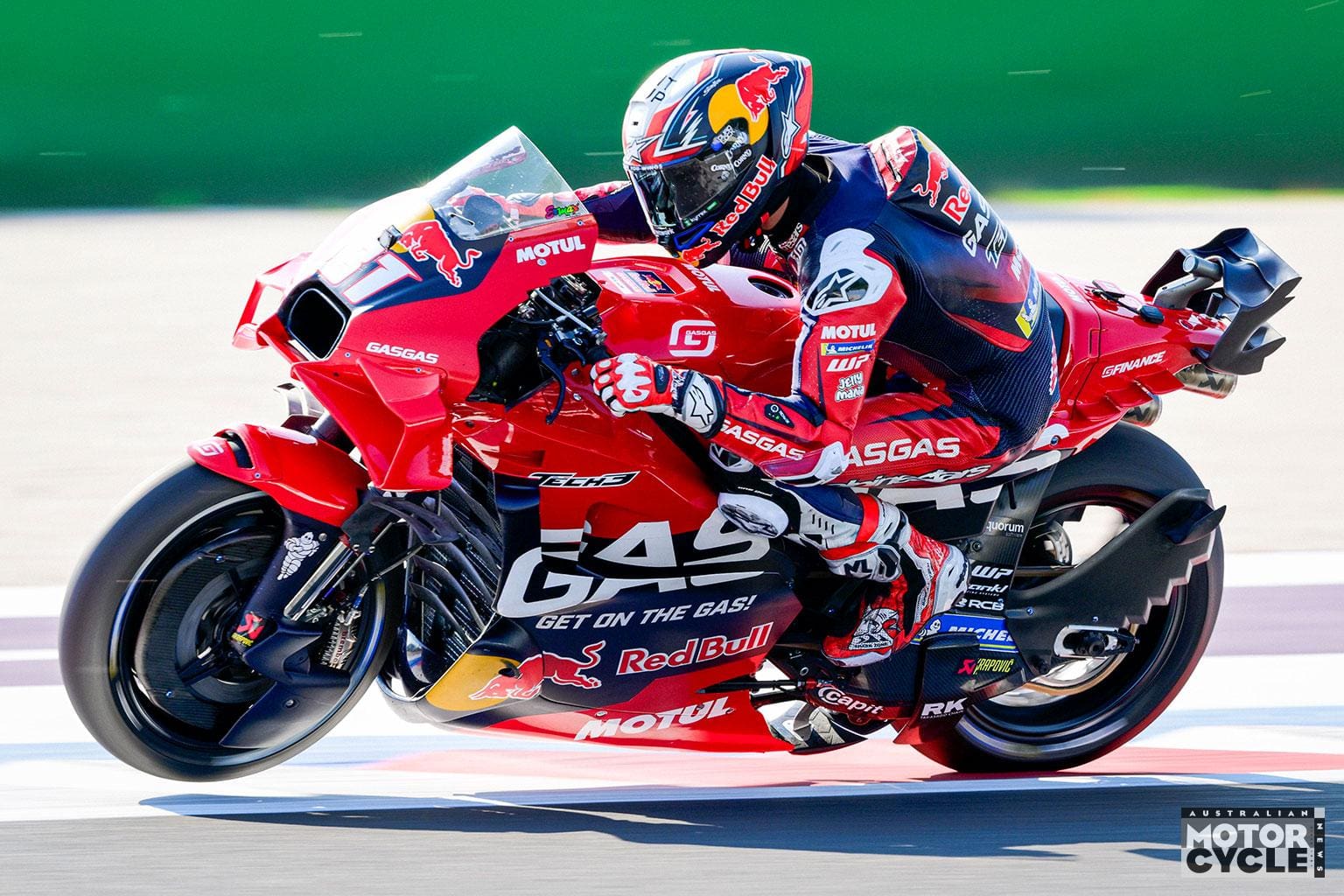
Stegosaurus fins and rear wings
As we get towards the back of a motorcycle, the aero parts arguably become less important. By the time the air reaches the rear of the seat unit, behind the rider, it’s already been battered and shifted around by the rest of the machine’s bodywork, not to mention the awkwardly-shaped and distinctly un-aerodynamic human perched on top, so it’s harder to use that airflow to make the bike go faster or to grip harder.
In the past, efforts at the rear tended to be focused on smoothing the air’s transition from the rider’s back onto the bike’s tail, and to reduce the wake, cutting drag in the process.
Suzuki’s championship-winning RGV500 from 2000 is a good example, with its droopy-looking and bulky rear end.
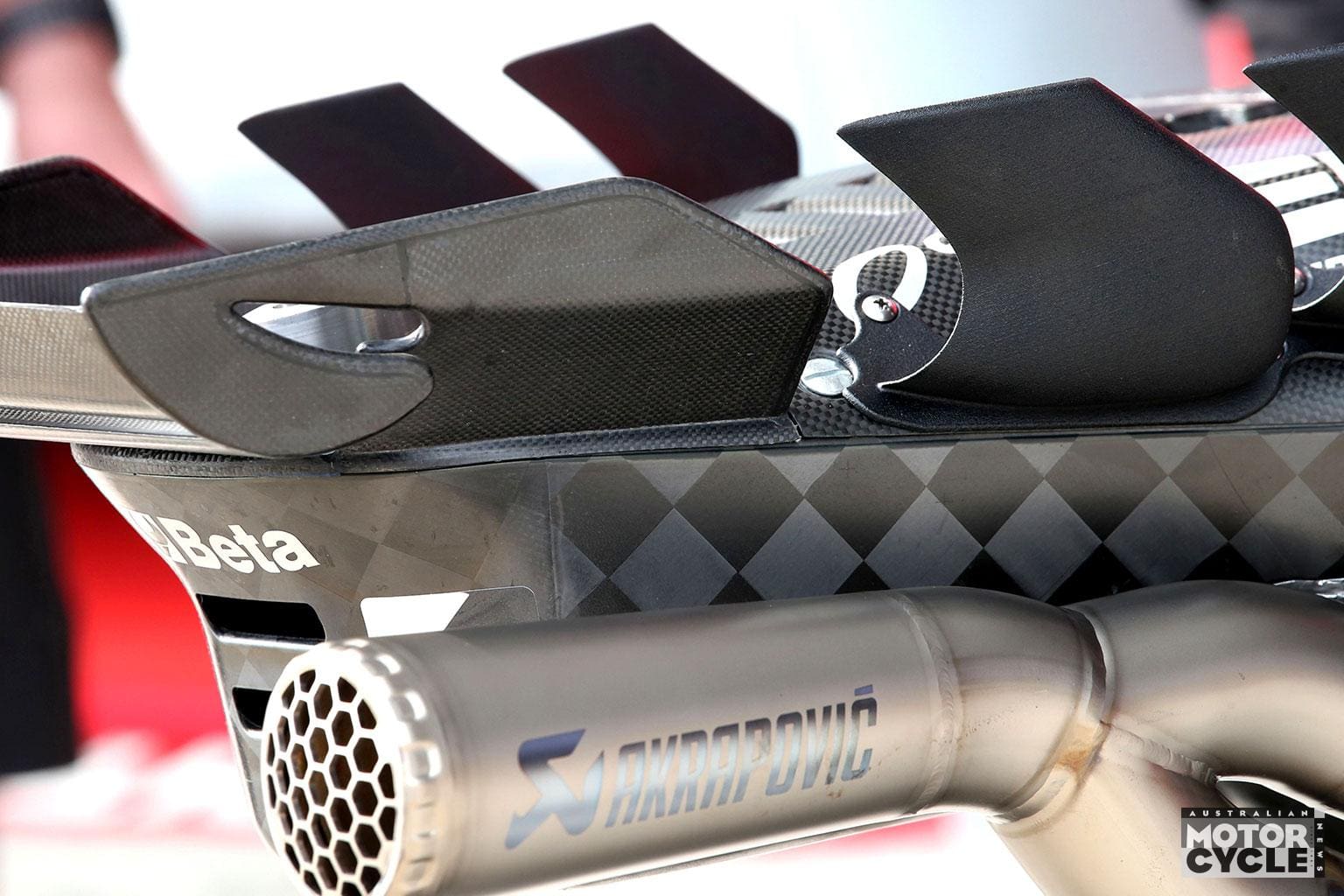
As the 2000s went on, the trend shifted to minimising the tail entirely – witness the 2007 Honda RC212V. Later still the tail and under-seat area became a useful place to tuck away clutter like the exhaust where it couldn’t really harm the rest of the aero efficiency.
Now, though, we’re seeing fins and wings sprouting from the upper surface of the tail as designers look for every last advantage.
The ‘stegosaurus’ fins that have appeared on several recent GP bikes are likely to have multiple functions, from cleaning-up rear airflow to reducing drag to adding a modicum of downforce and cornering force when the bike is tipped over, when they adopt positions similar to the vertical and horizontal tails of an aeroplane.
It’s that aeroplane tail analogy that might provide the best explanation of their use, and as such their main function is probably to add stability so that the rest of the bike’s aero parts can work as intended.
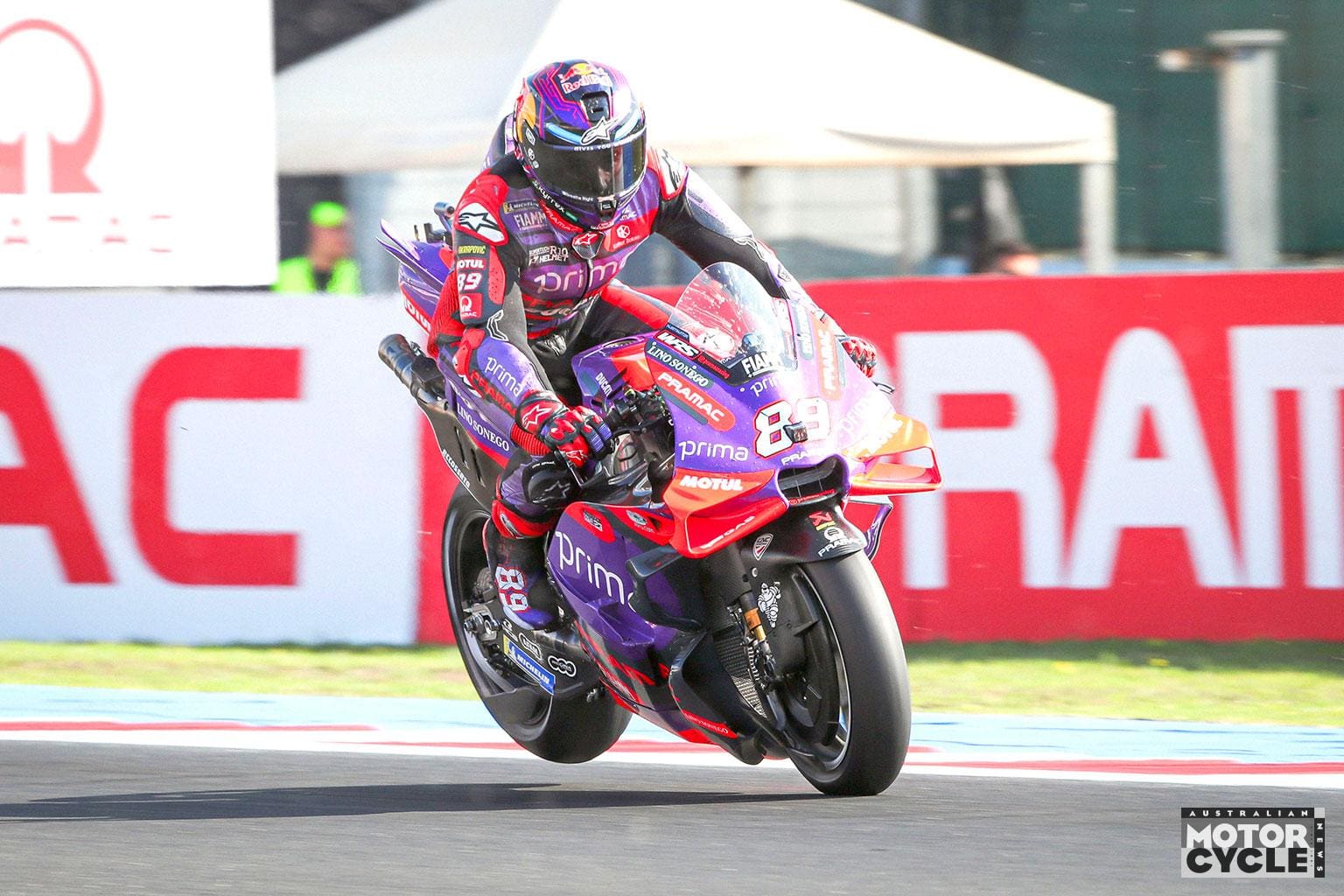
You might have noticed that modern GP riders don’t tend to ‘back’ their bikes into corners or slide them on the way out in the way that was common a few years ago – think Garry McCoy at the turn of the millennium. They keep them on a straighter, less spectacular path. That’s in part because the bike’s aero is all designed to work when its wheels are in line. Get sideways and all that carefully-calculated downforce goes out of the window.
Those rear fins will help keep the back of the bike in line, even if the rear wheel leaves the ground during braking. It might even reduce the chance of the back end stepping out under acceleration, all helping to ensure the rest of the aero is hitting the wind at the angle it’s intended to.
Horizontal rear wings haven’t been so popular, but we have seen several teams try them, including Aprilia and KTM. Once again, Aprilia has been open enough to file patent applications relating to its version of the idea, confirming that the main intention of a horizontal rear wing is to provide downforce, particularly at high speed on straights so that when the rider hits the brakes, the back wheel is more likely to stay on the tarmac. It says this keeps the bike heading in a straight line and ensures all the rest of the aerodynamic parts are working at their best.
Street transfer
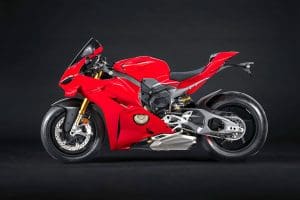
How all this tech relates to roadbikes
THE PROBLEM with MotoGP aerodynamics from a production bike perspective is that those racers are designed within a specific set of rules and operate within
a tight set of parameters – always at the very limits of their performance. For roadbikes, neither factor holds true. As a result it’s both illogical and pointless to import MotoGP aerodynamics directly to the street.
Want better front downforce or less drag? Wings and fairing designs that would be illegal in MotoGP could easily be adopted on production bikes, going all the way to those 50s-style dustbin fairings if you really want to slice through the air. Ground-effect generating fairings are similarly hard to implement, simply because road riders will never reach the lean angles required to get them to work properly.
Where MotoGP ideas might have the greatest impact is where they’re able to use aero to improve cooling, allowing smaller radiators that reduce overall bulk and weight. But even here it’s hard to transition to the street because you don’t consistently ride flat-out. Bikes need to cope in traffic, not just at top speed.
Even so, the proliferation of winglets on every performance-oriented model shows that from a marketing perspective, what works in MotoGP can also work in the showroom. From that angle, it’s not hard to imagine other GP-inspired components reaching production, if only to boost the visual connection between road and race.
Just don’t expect to be able to exploit their potential on your way to the local shops.

